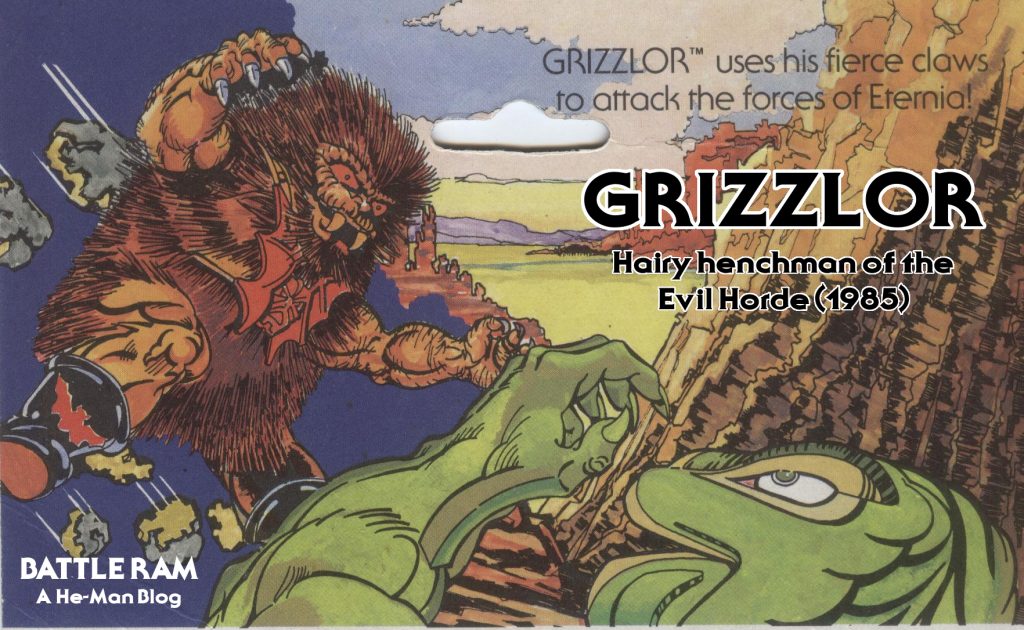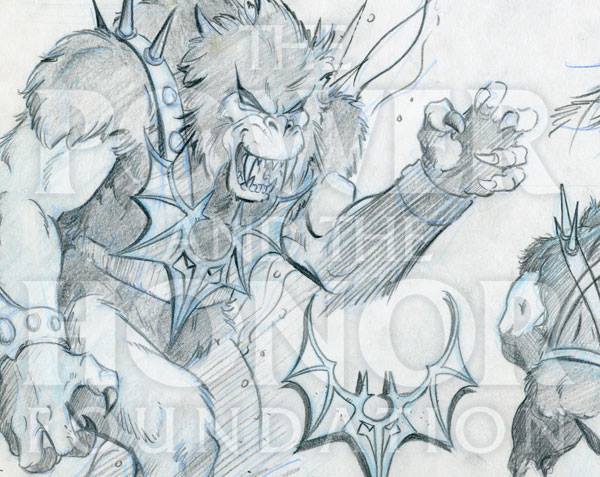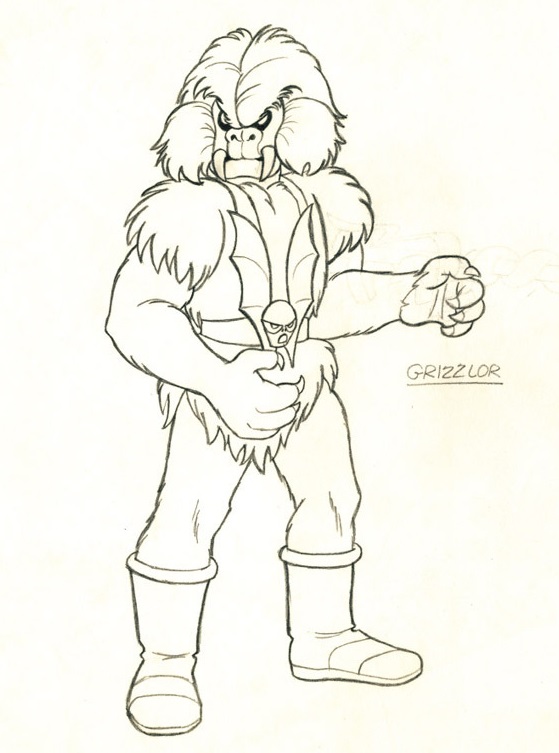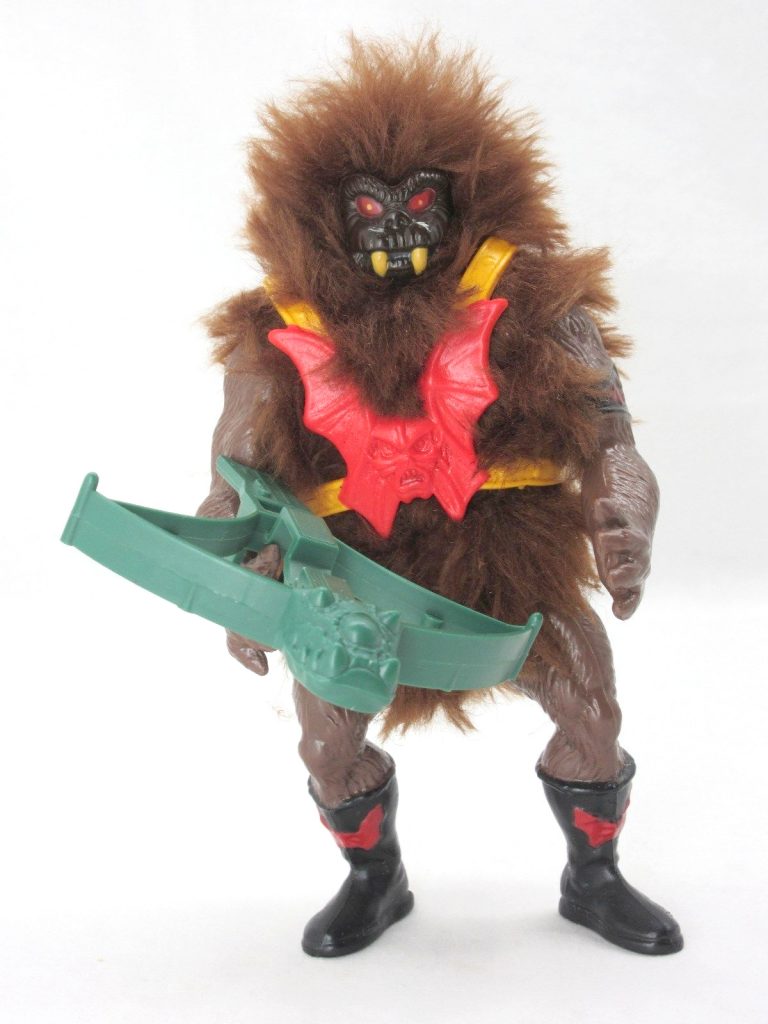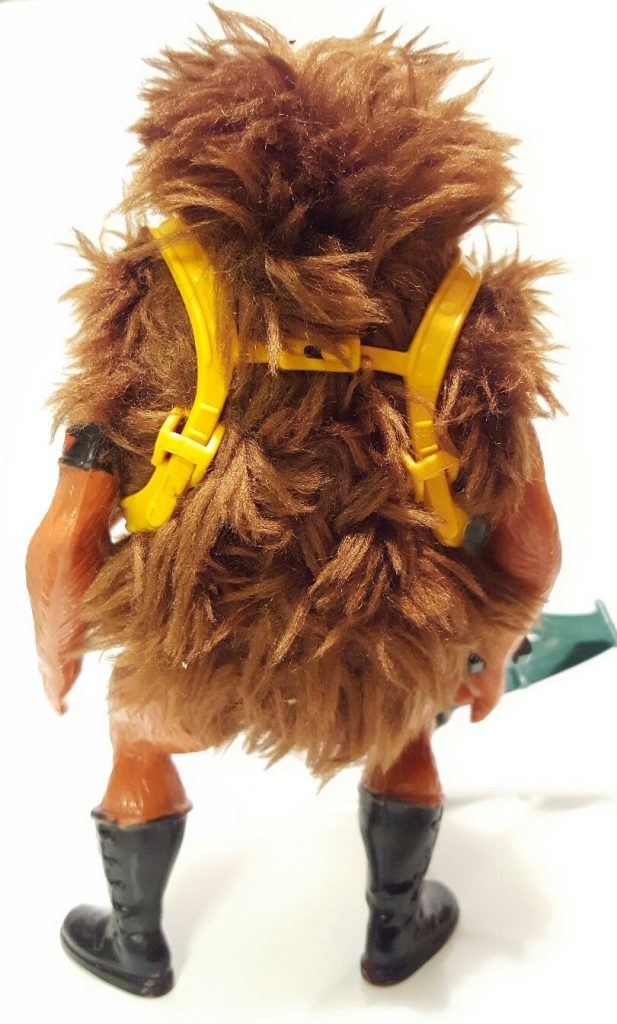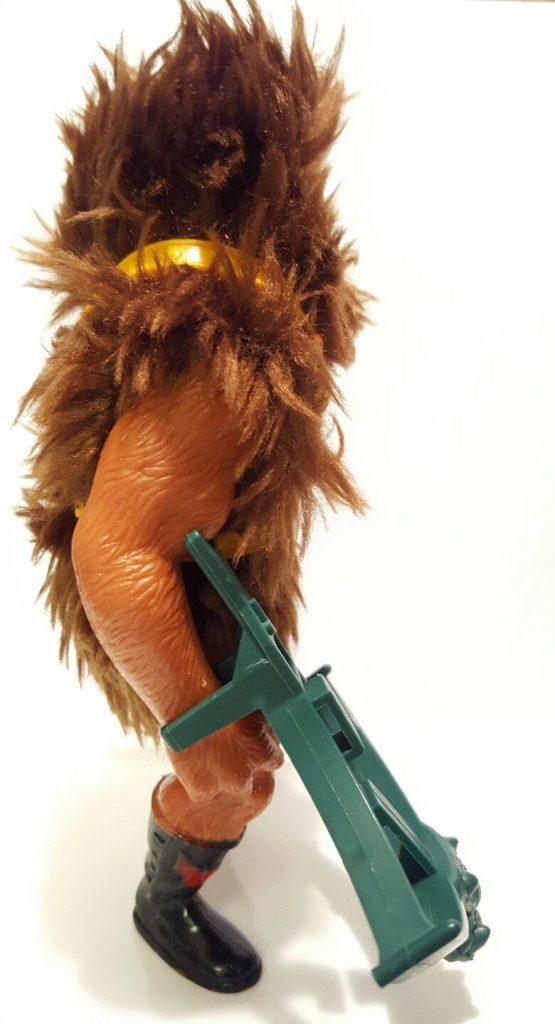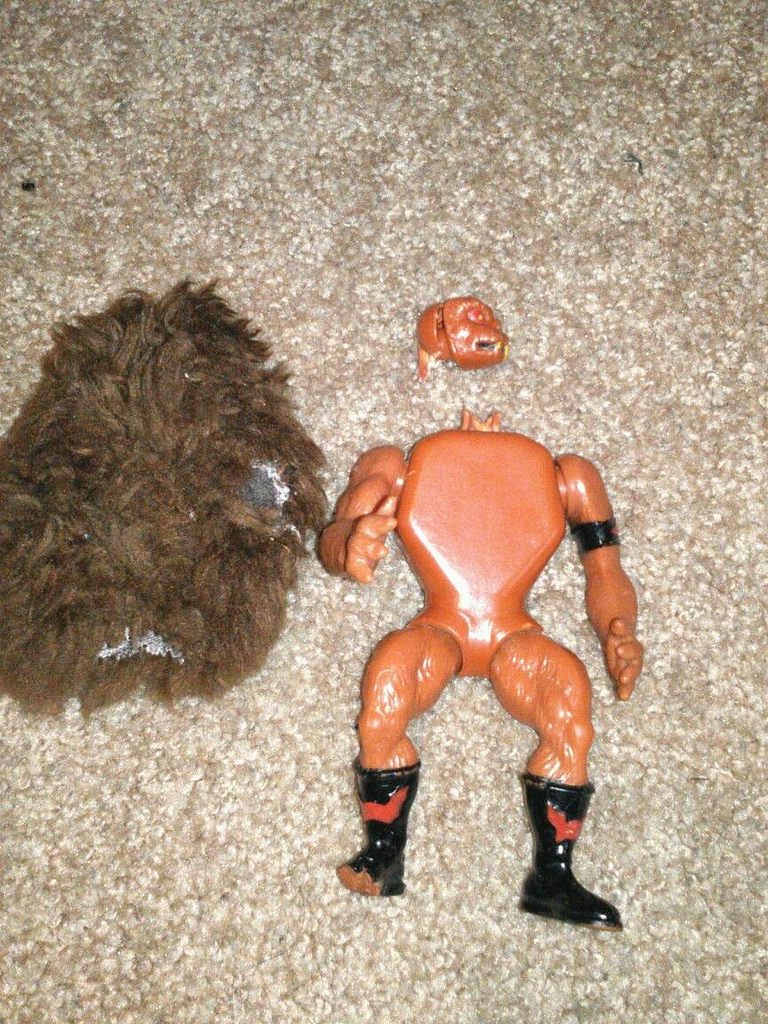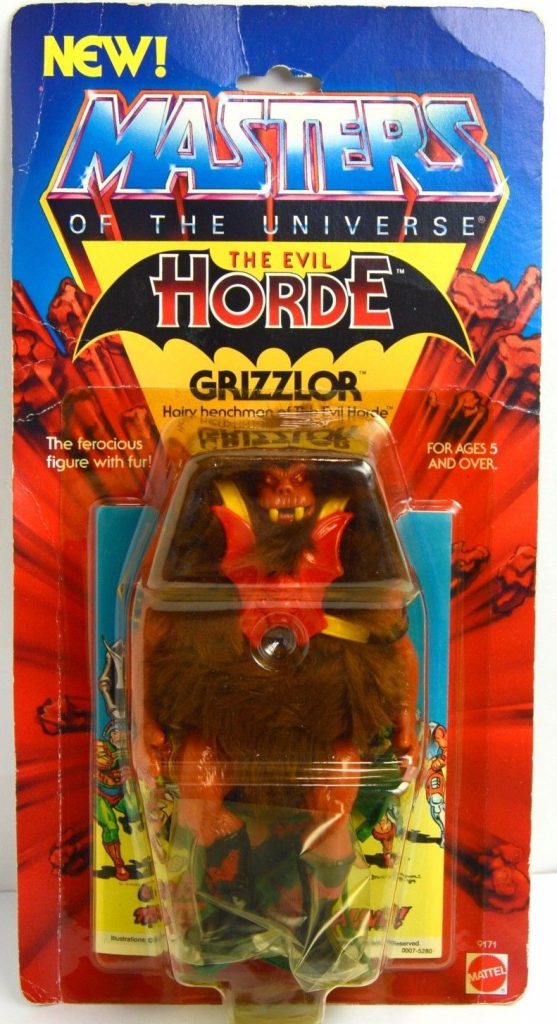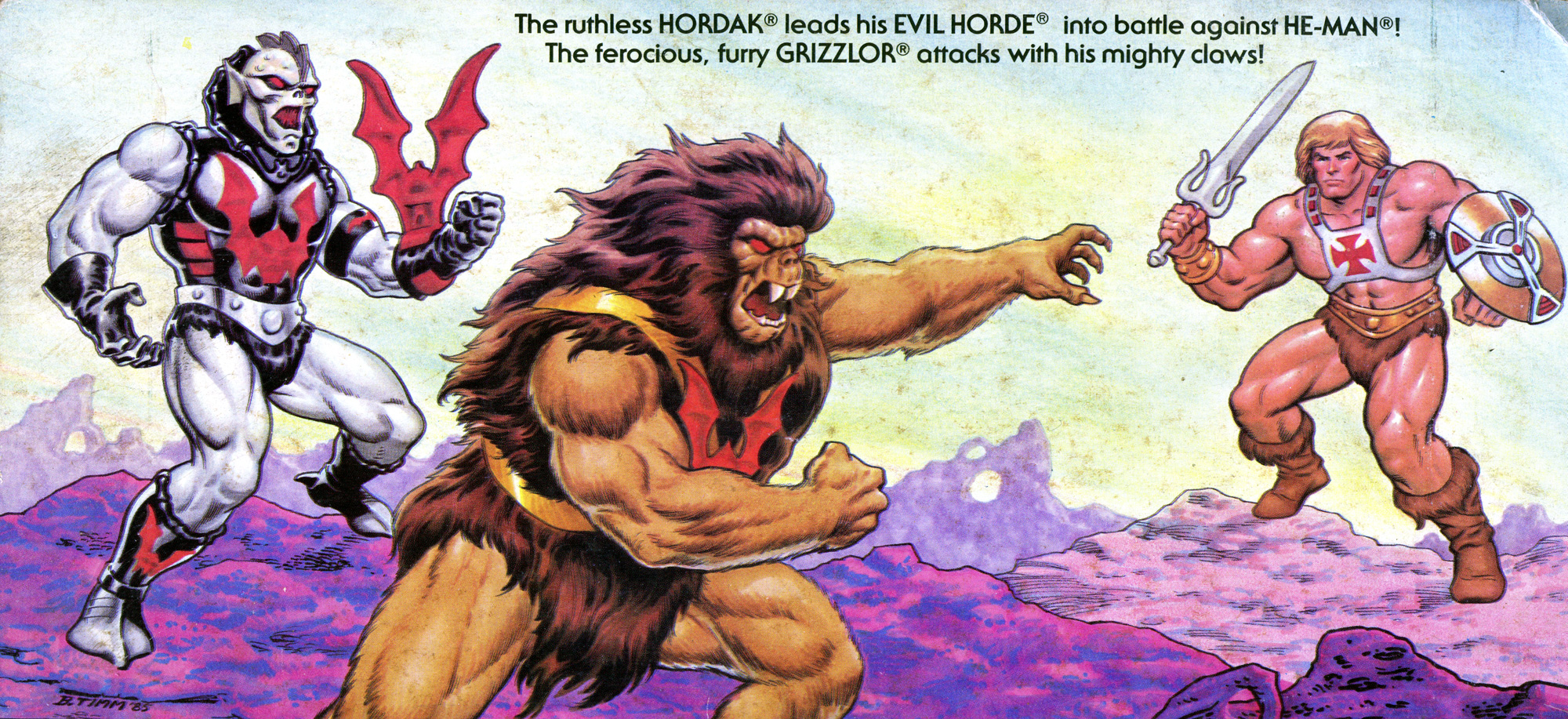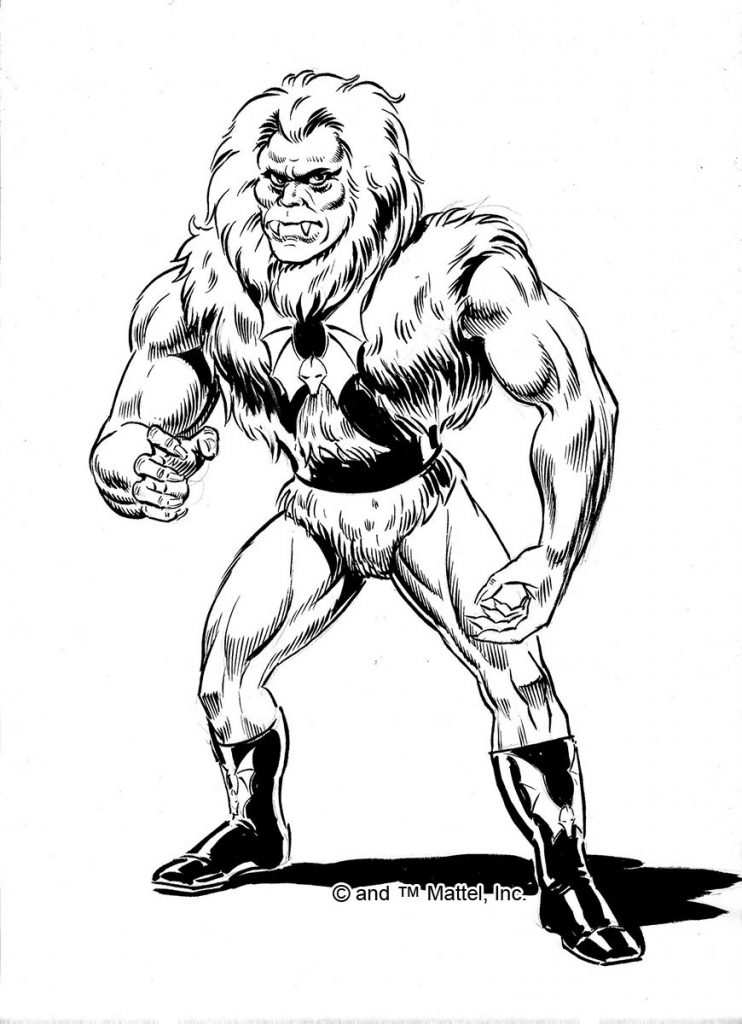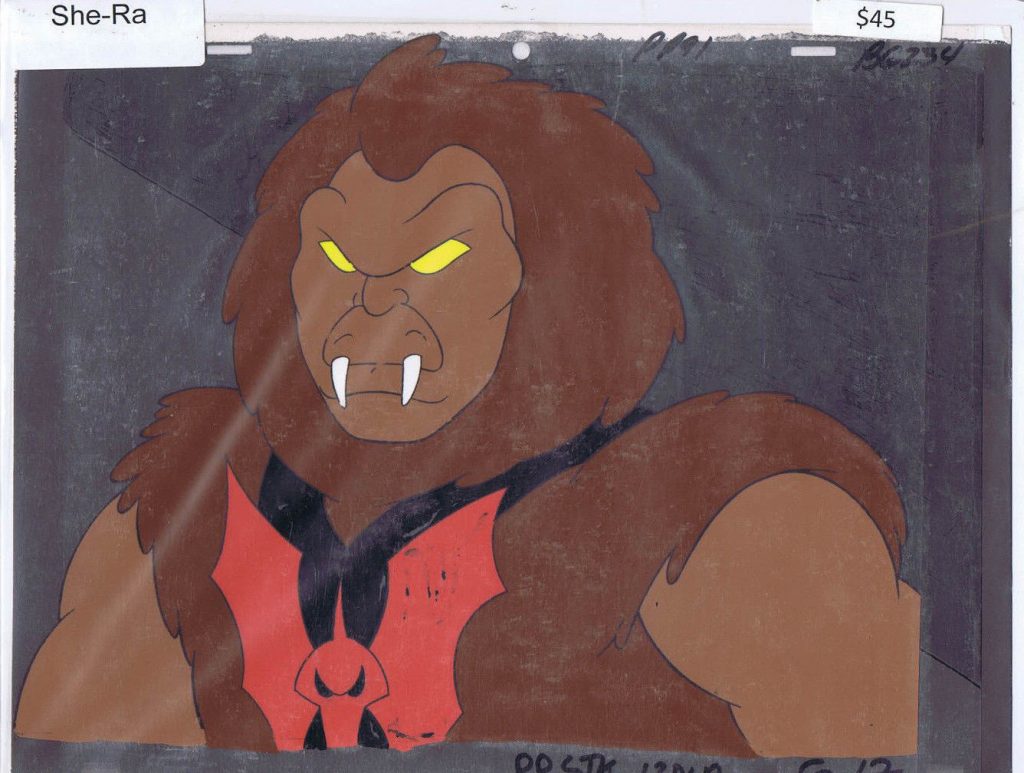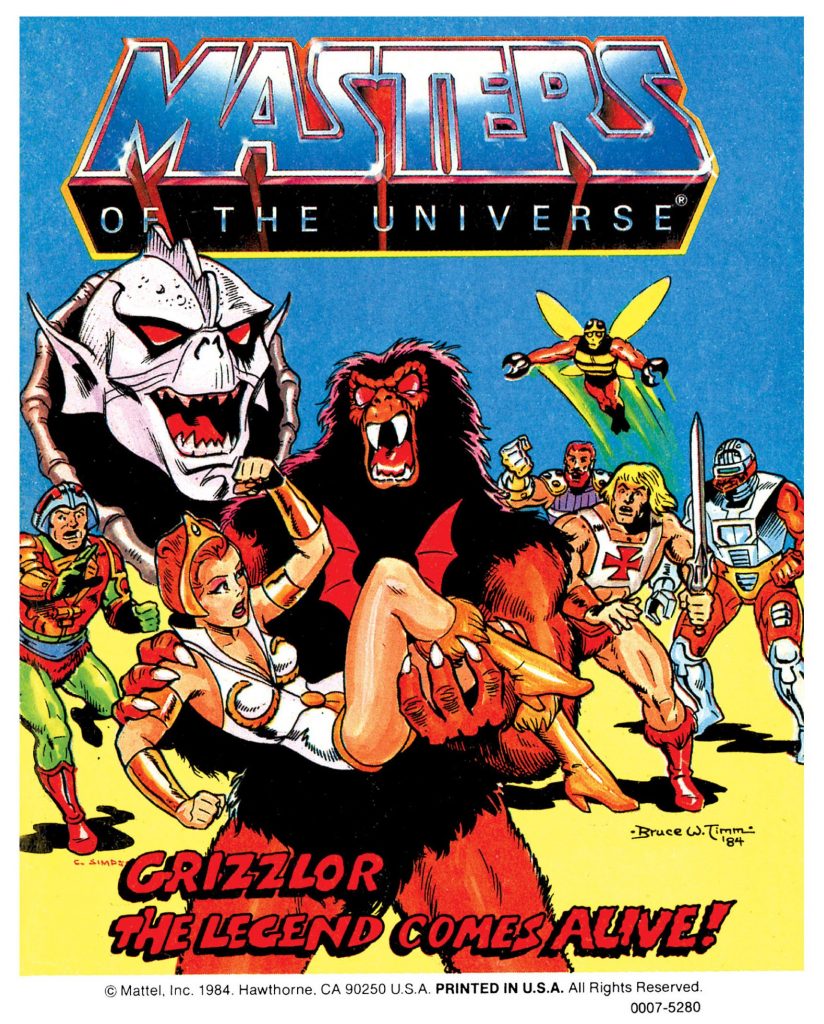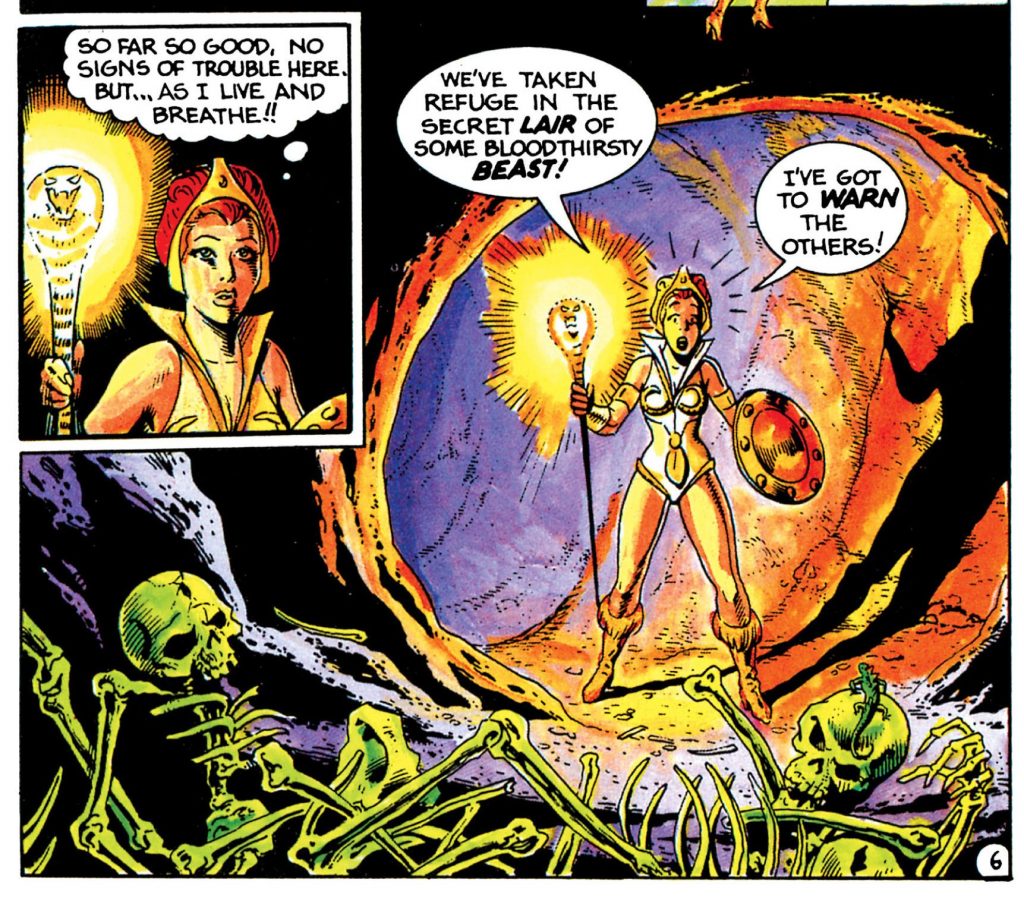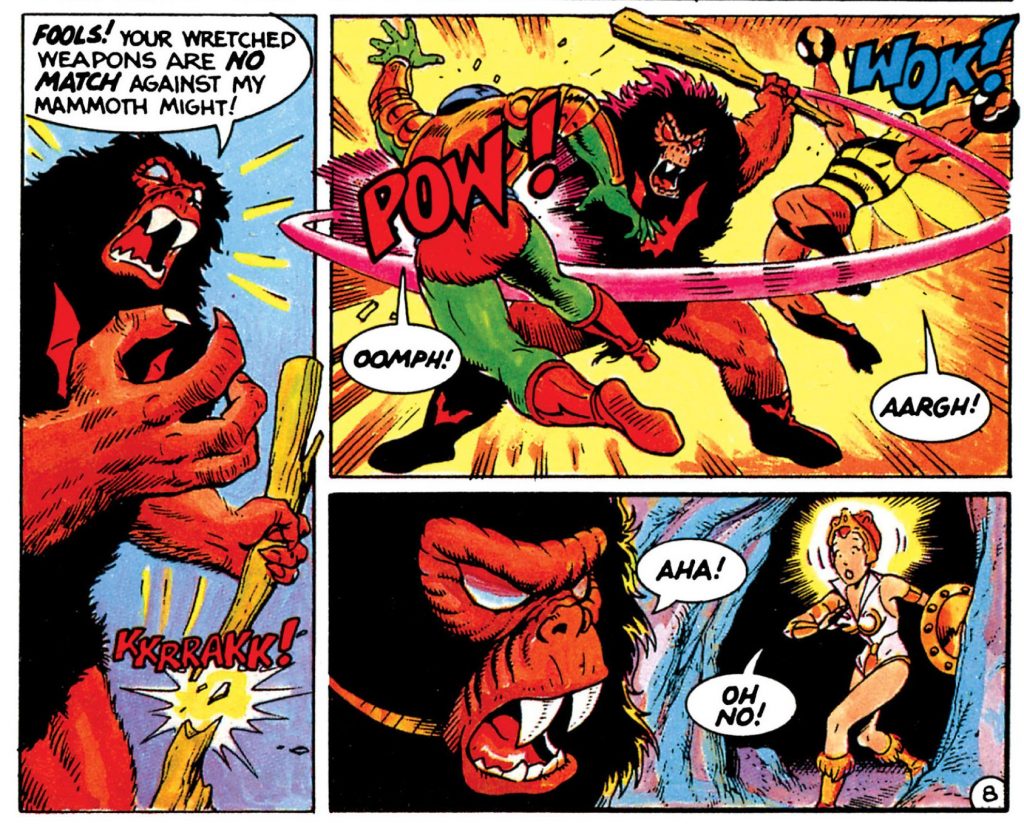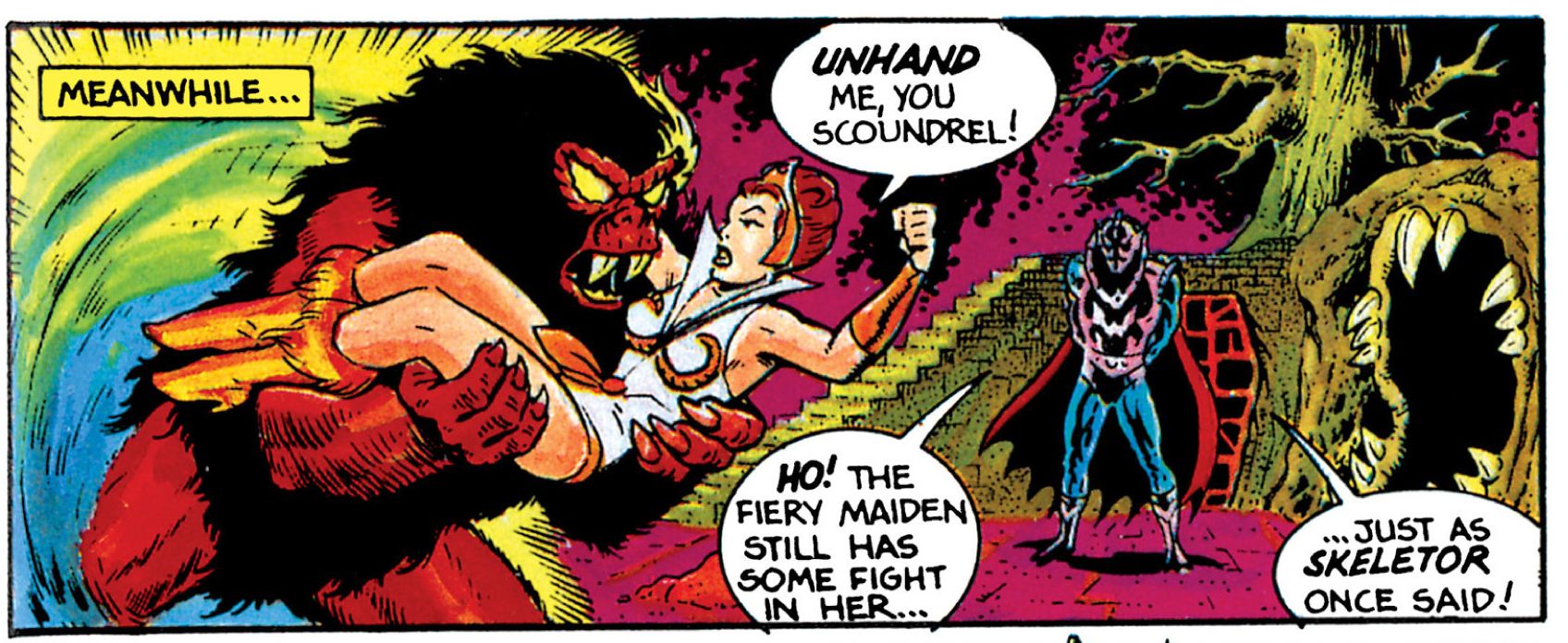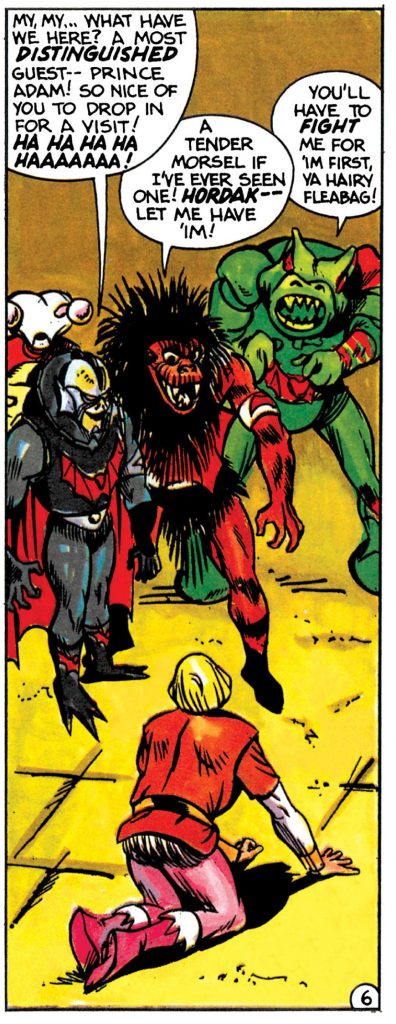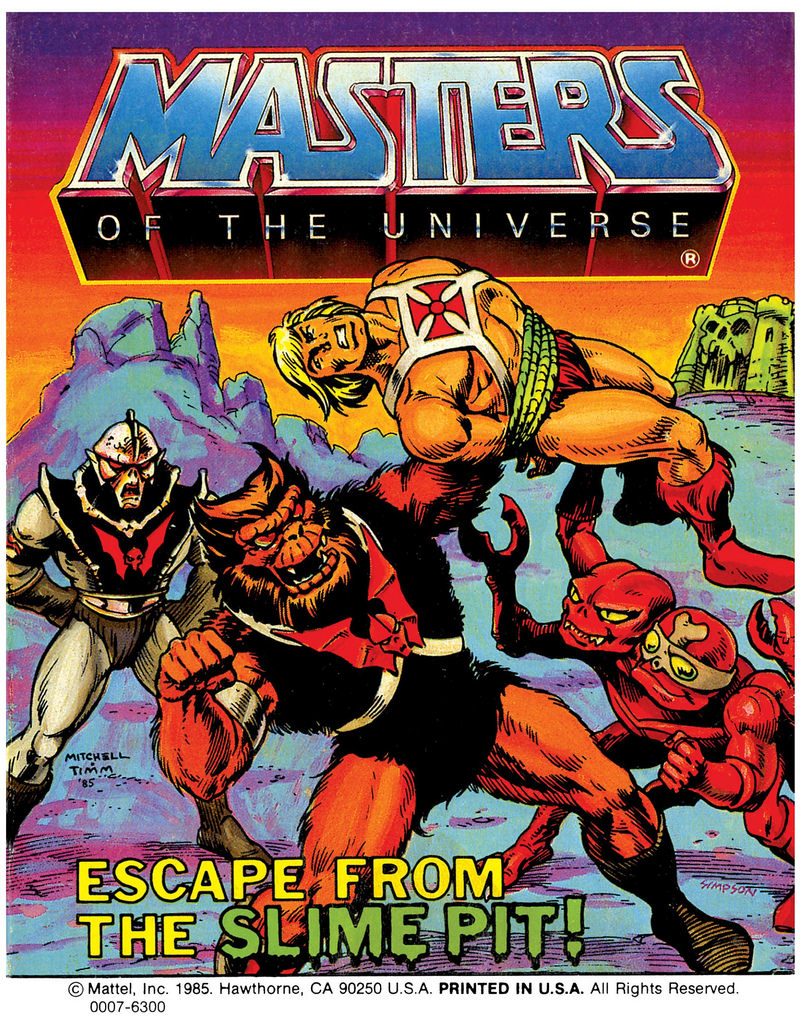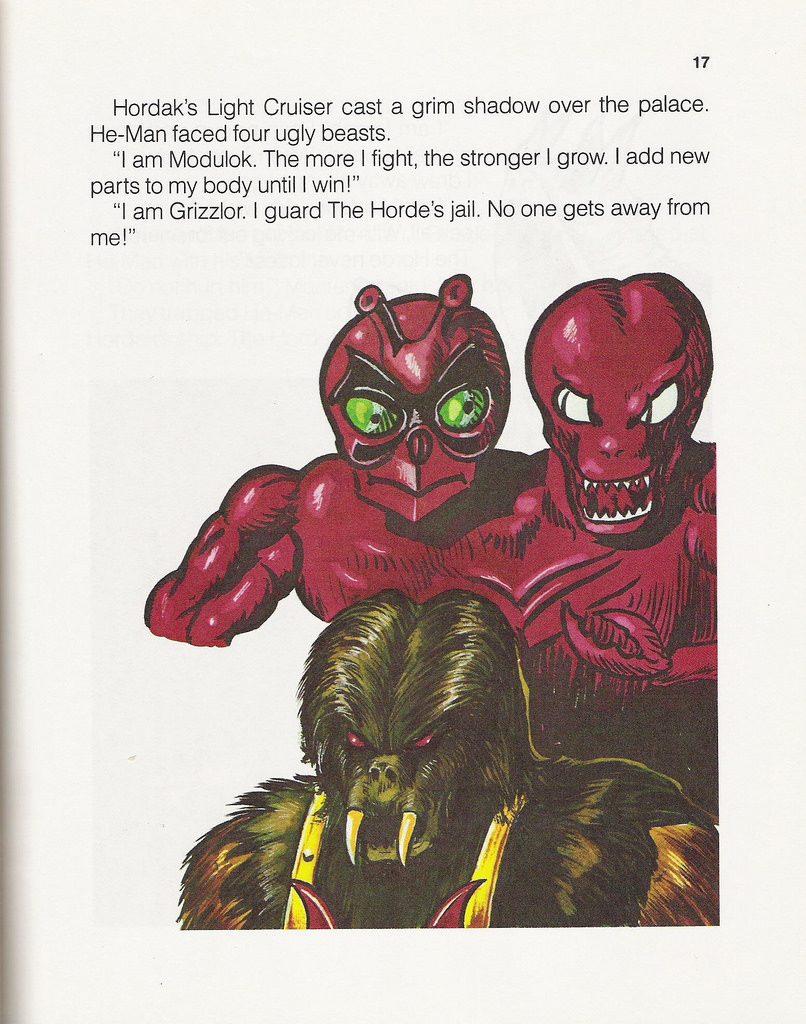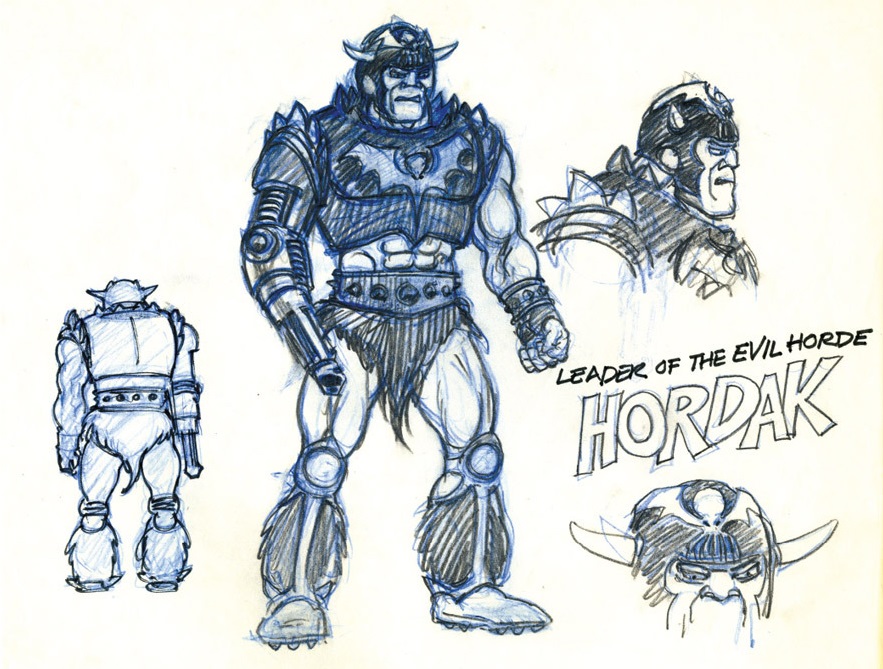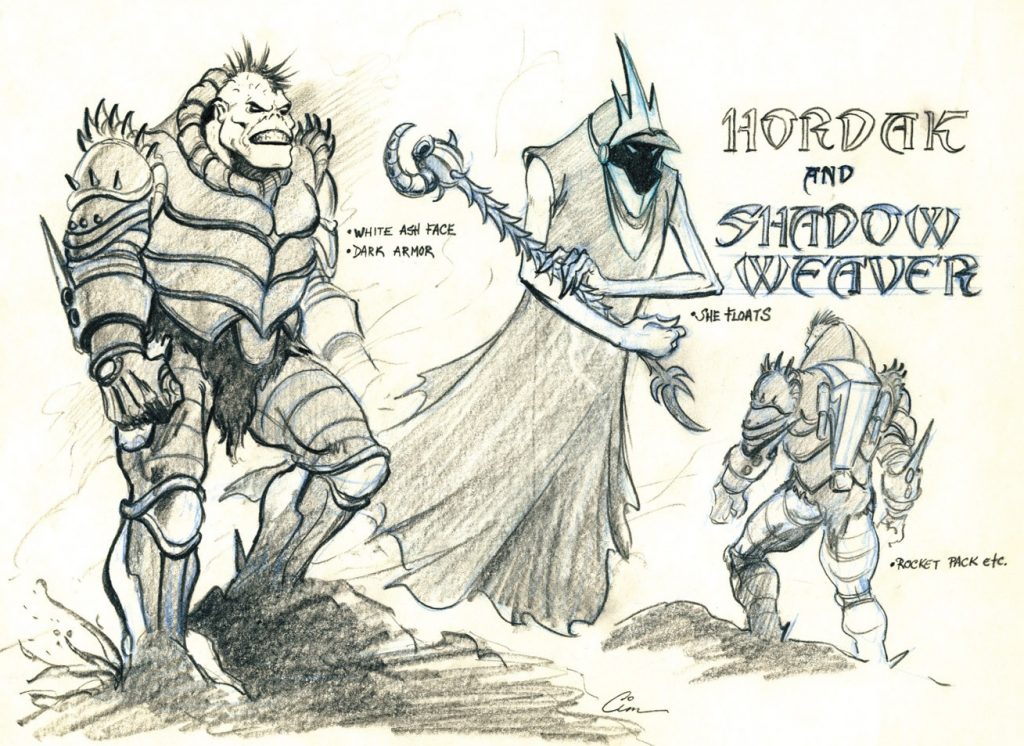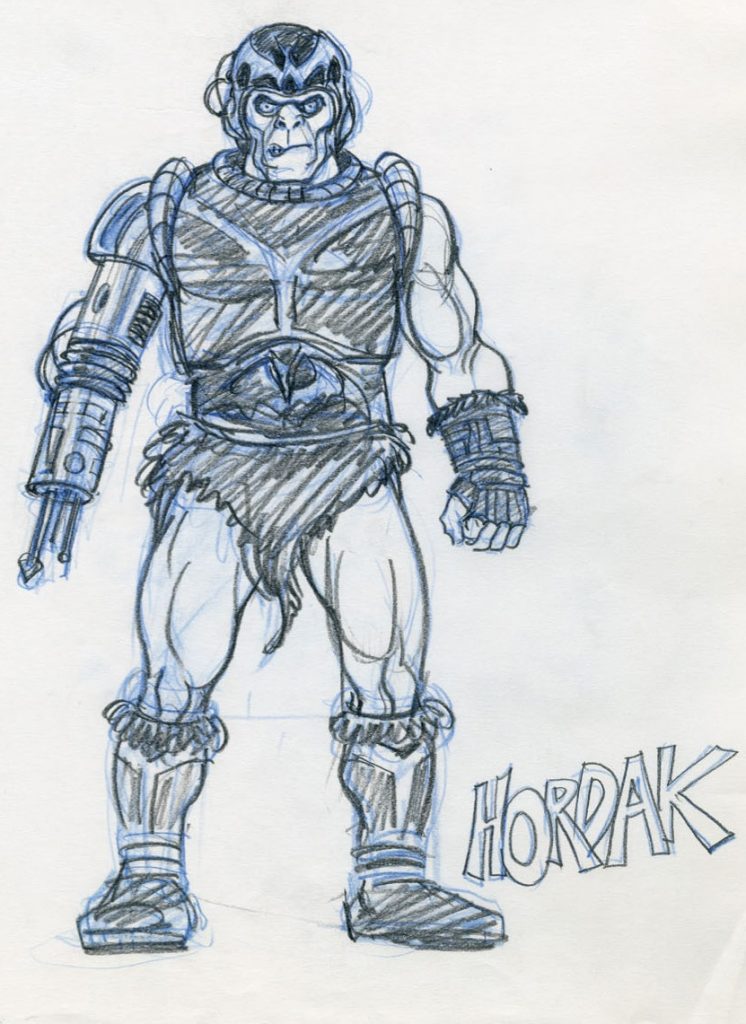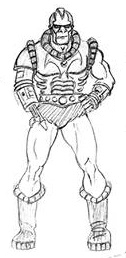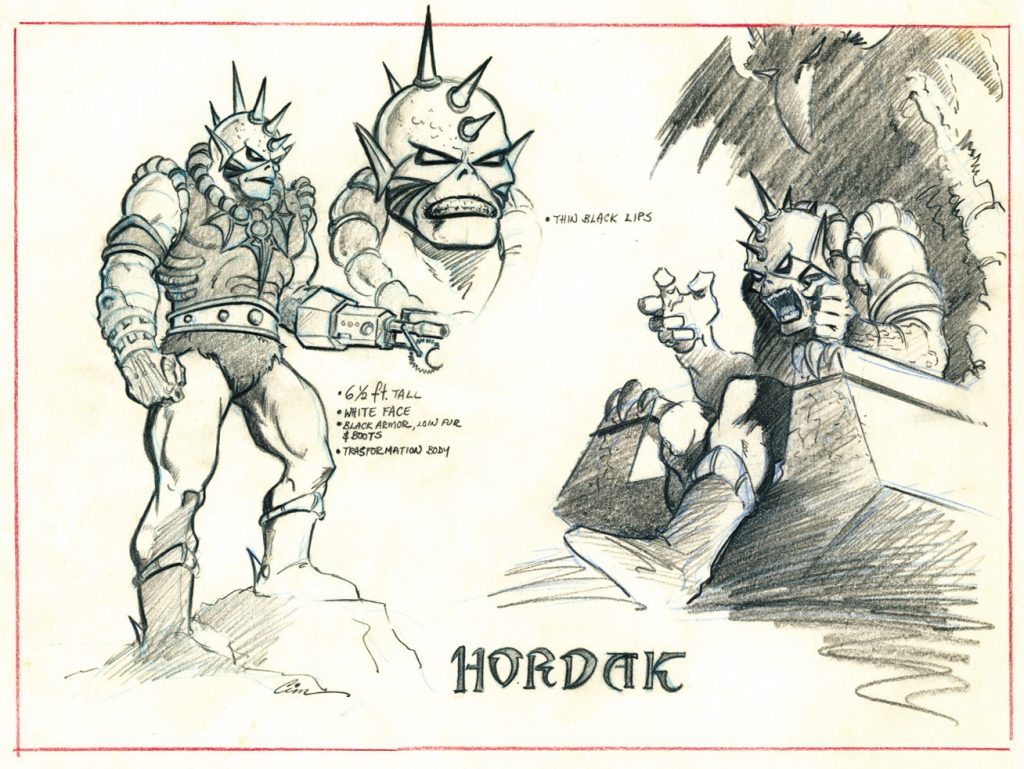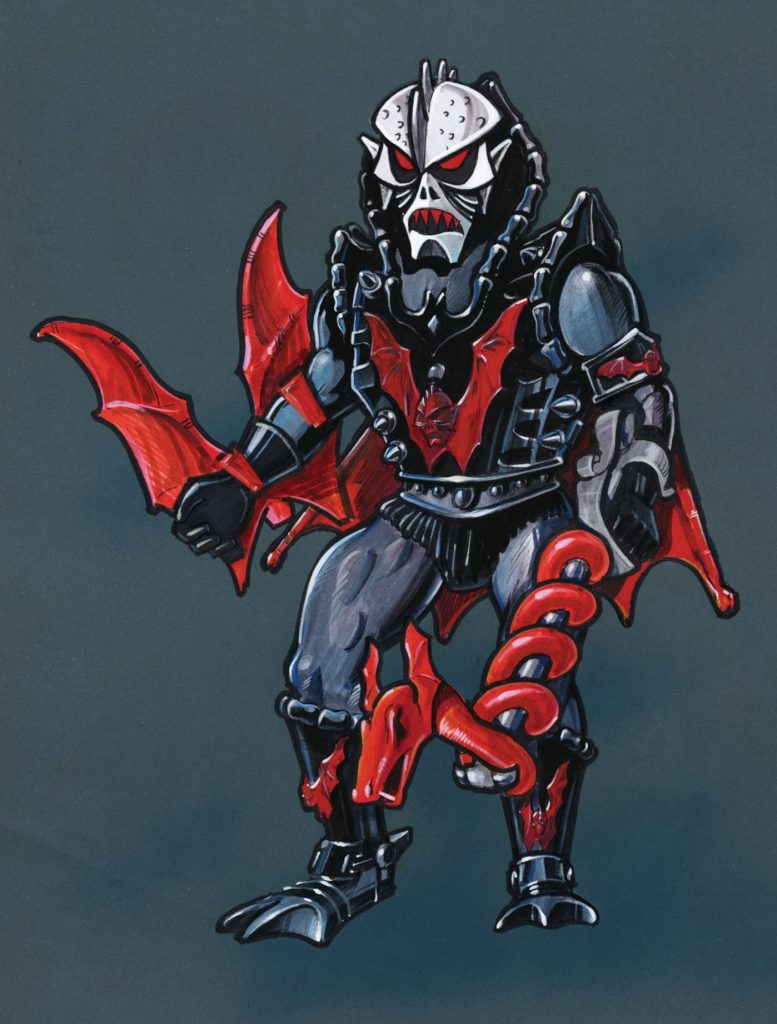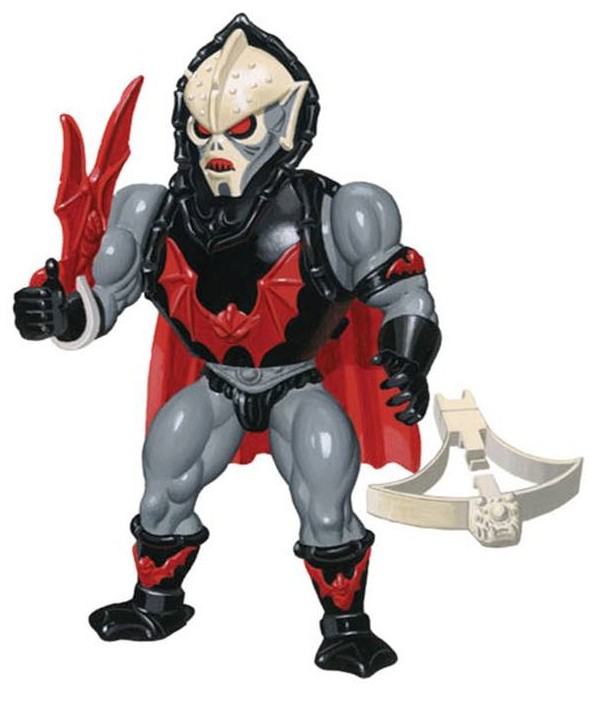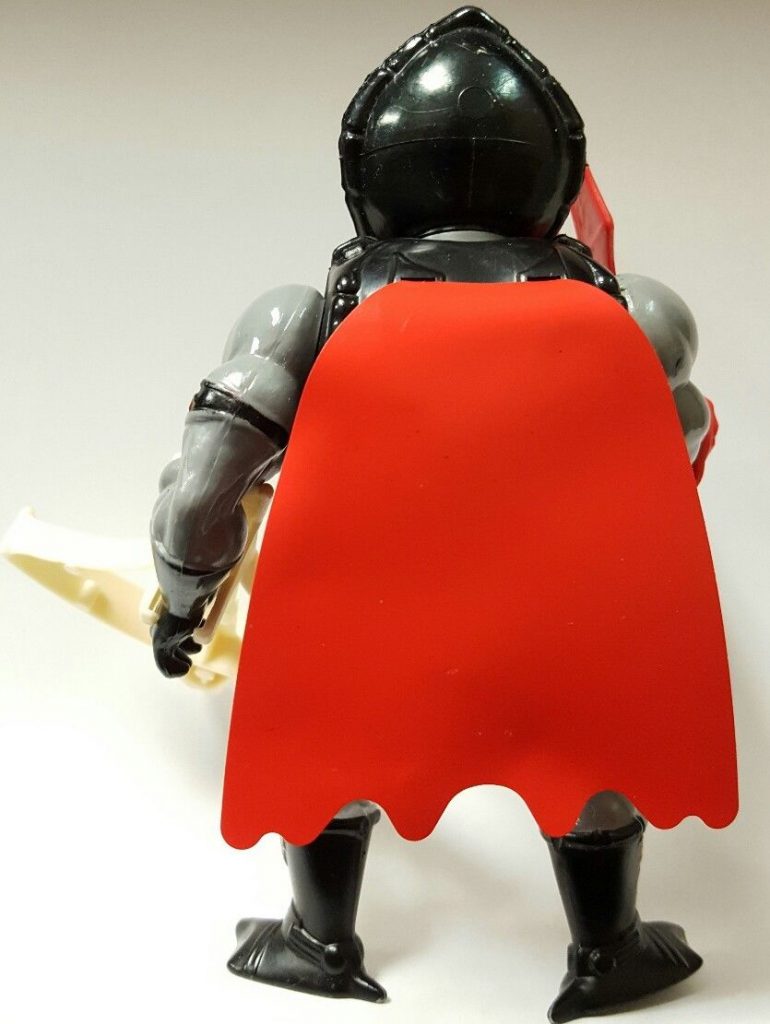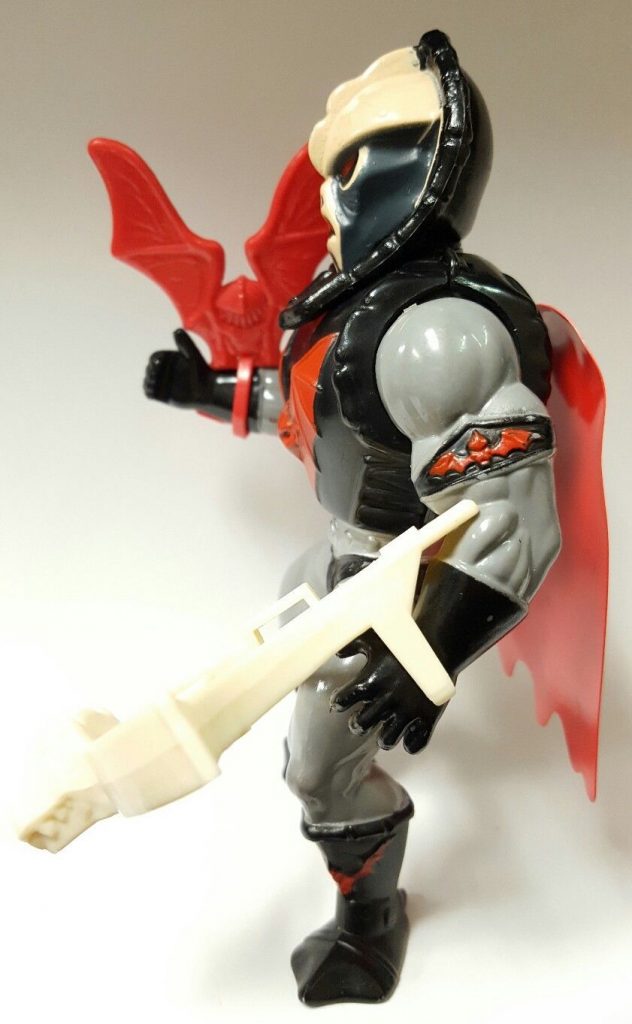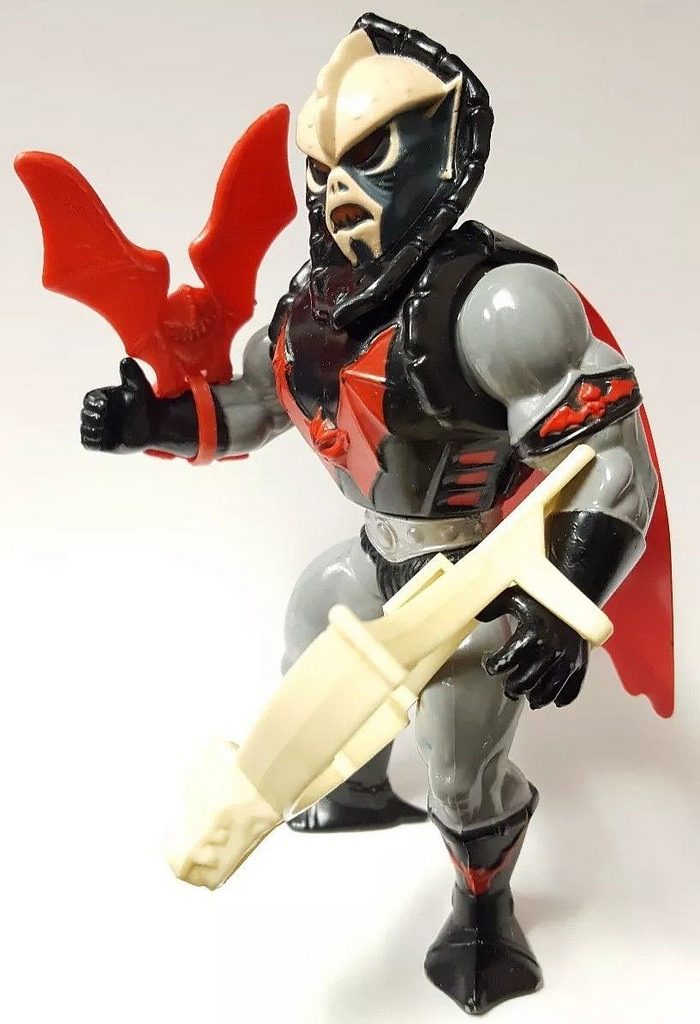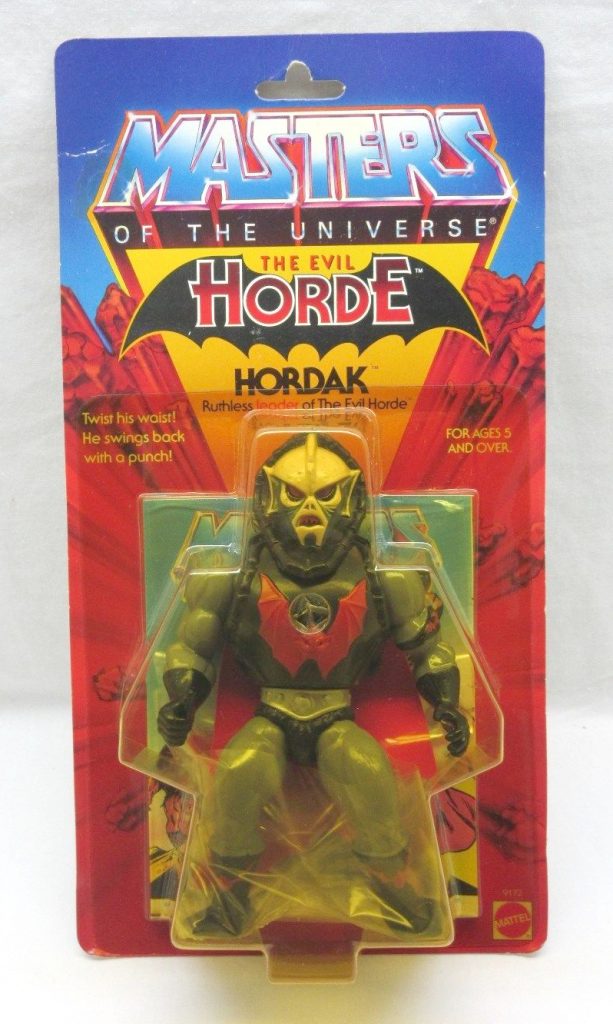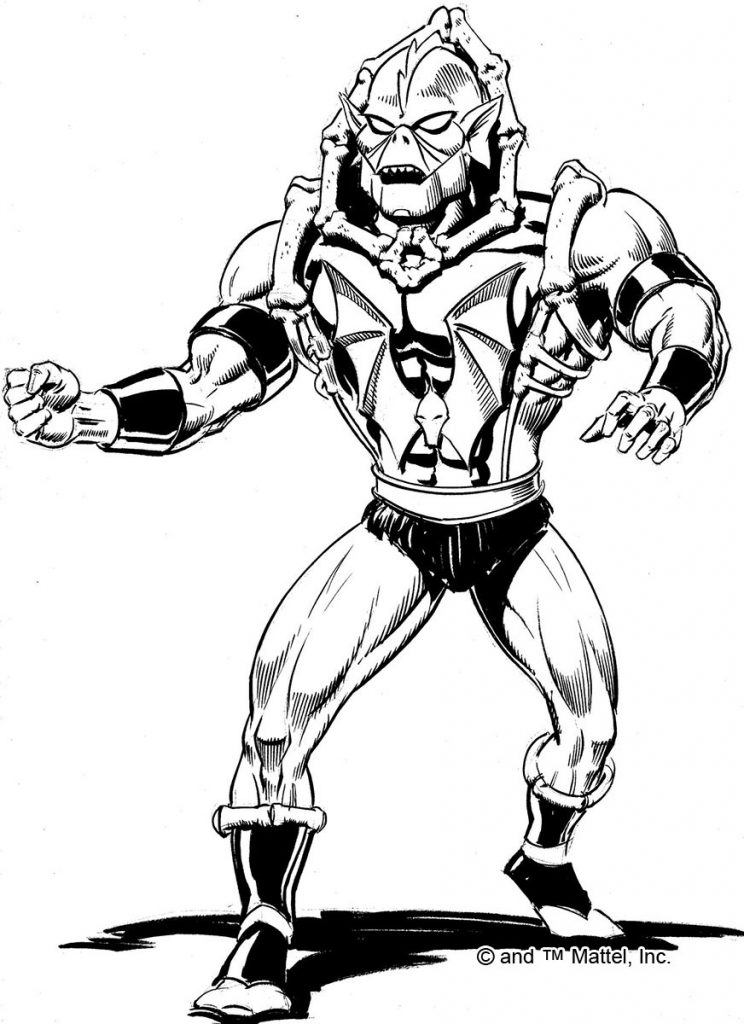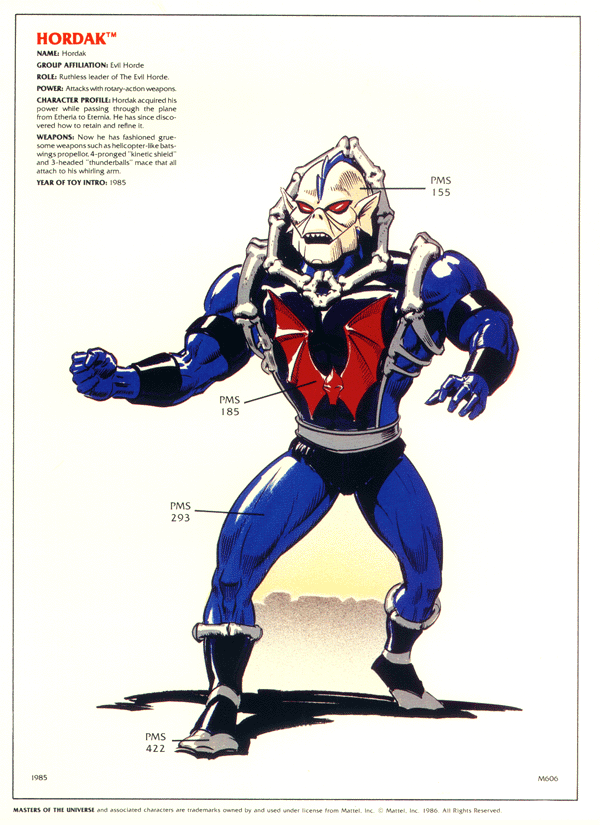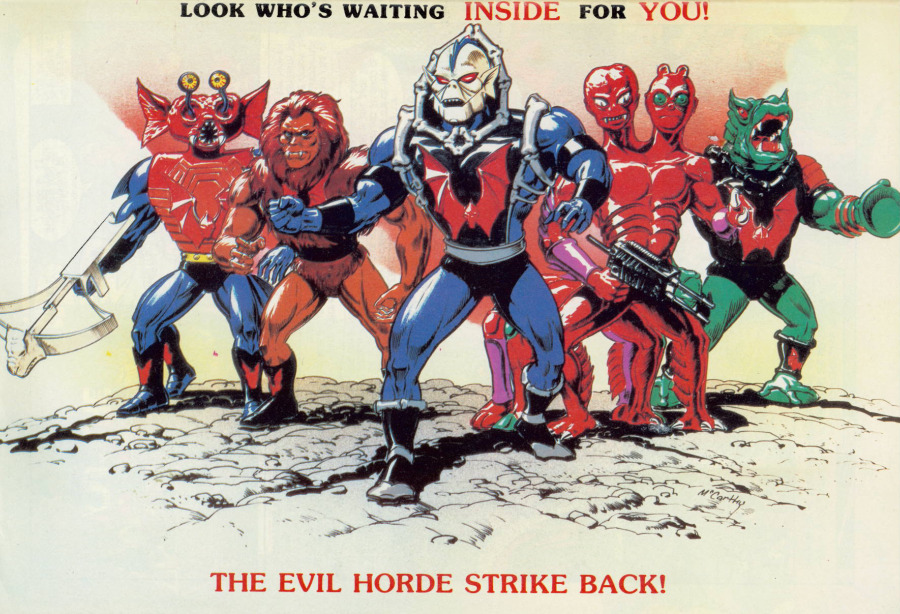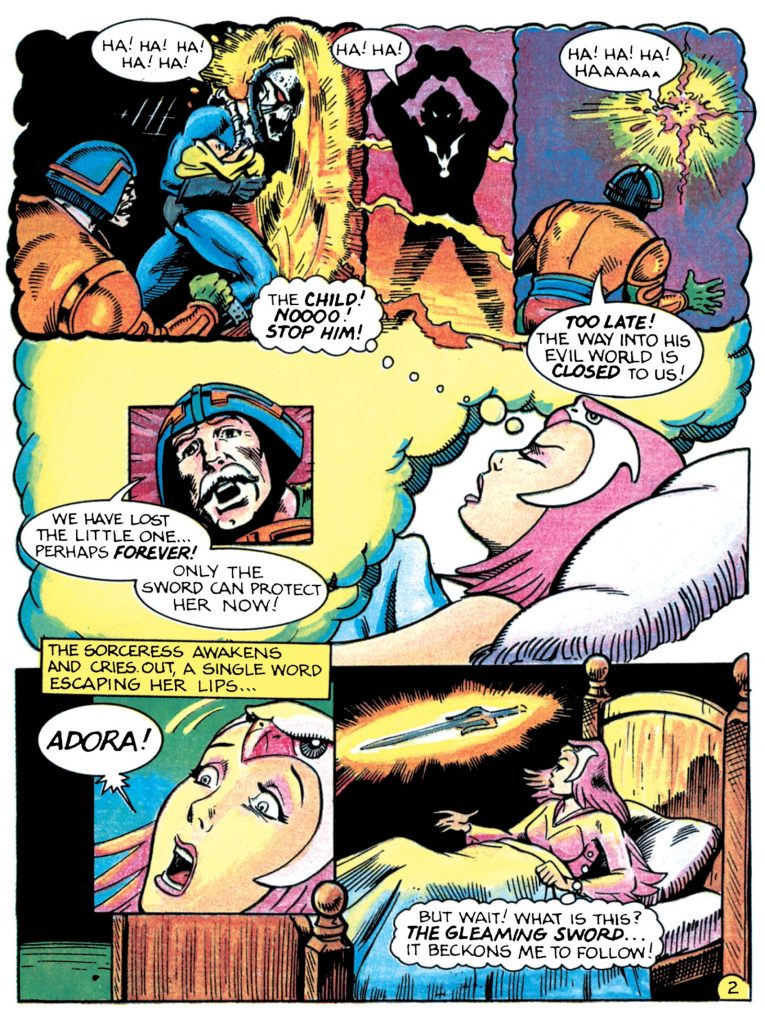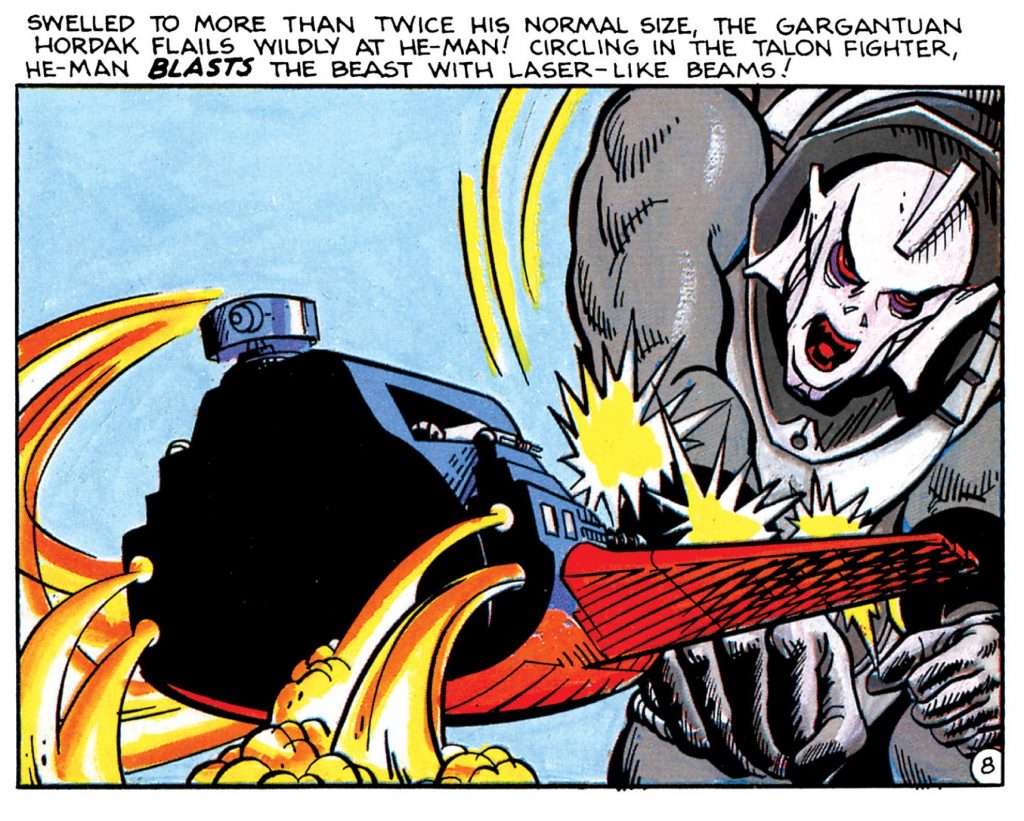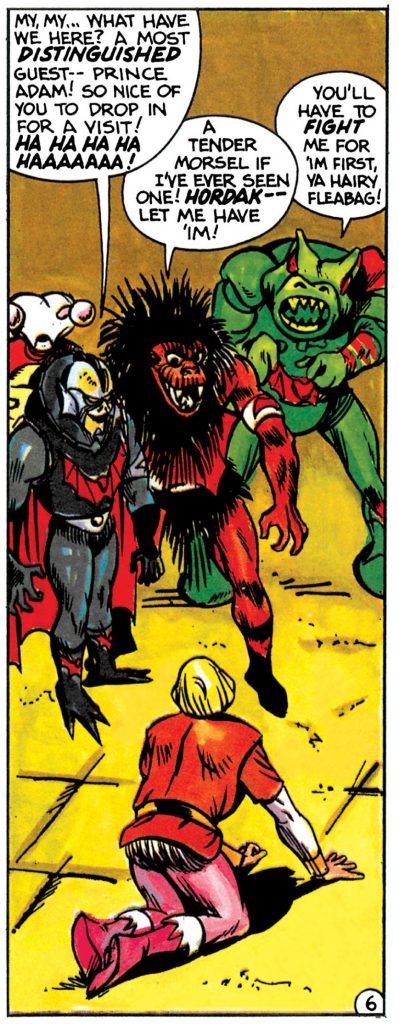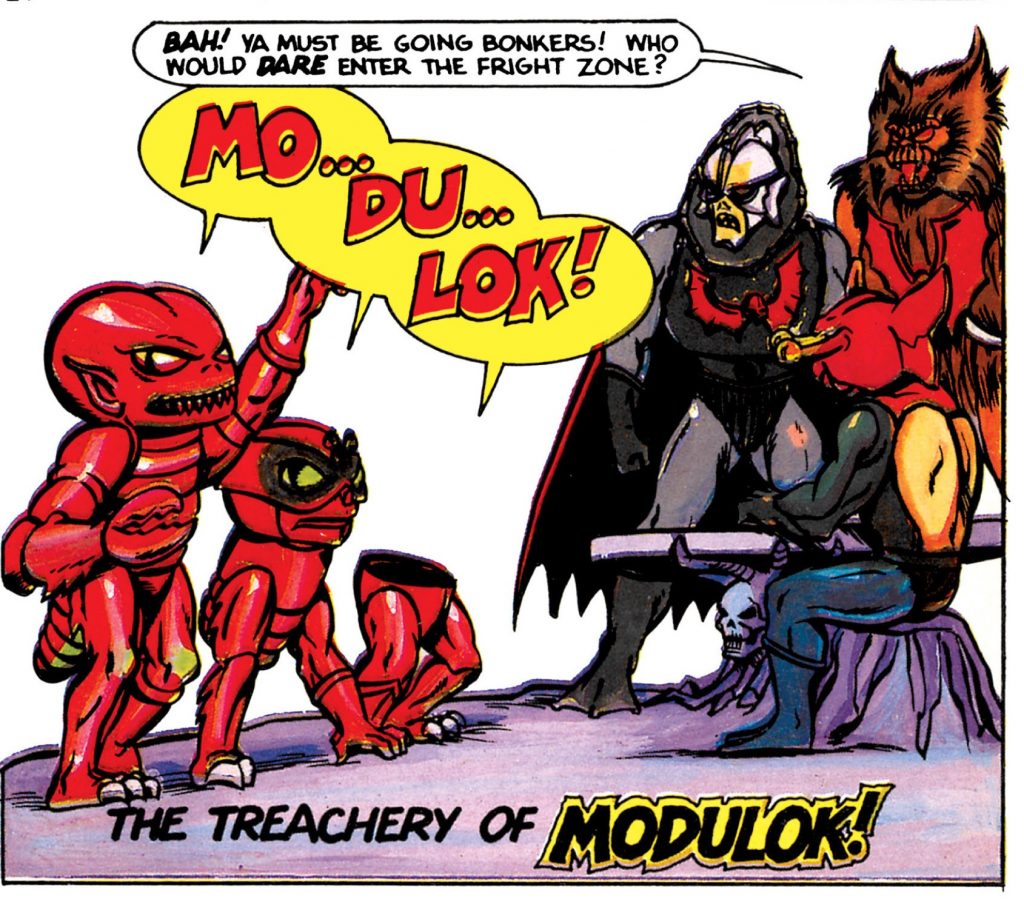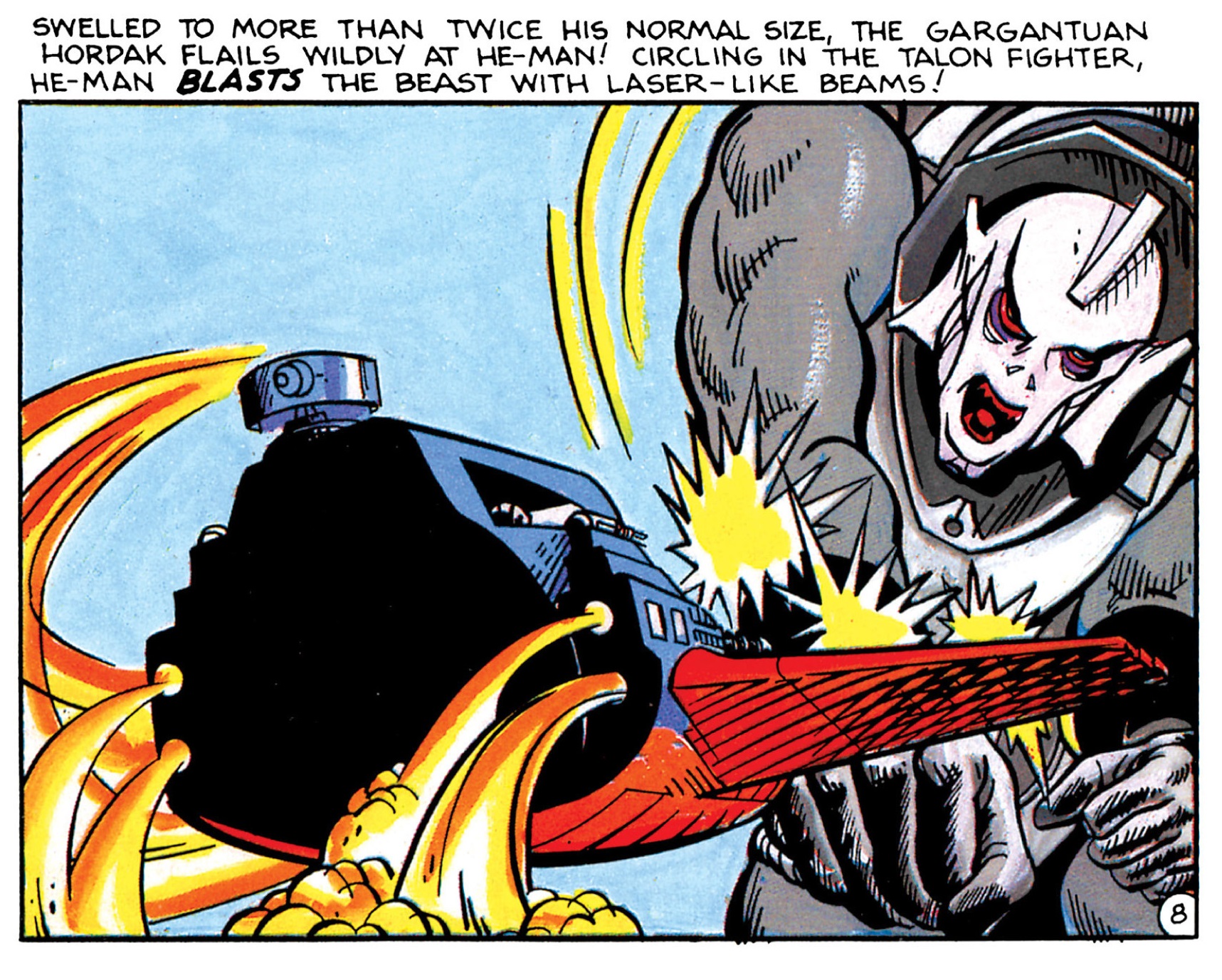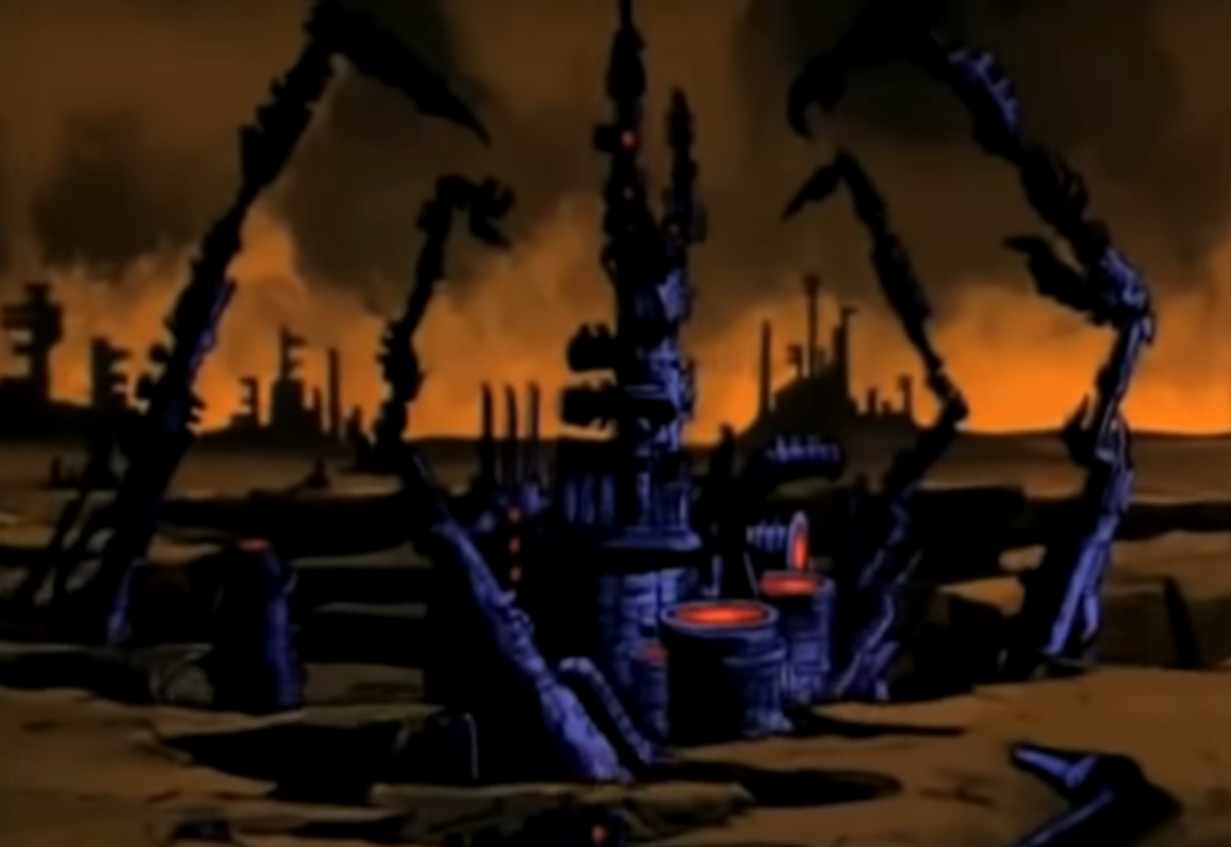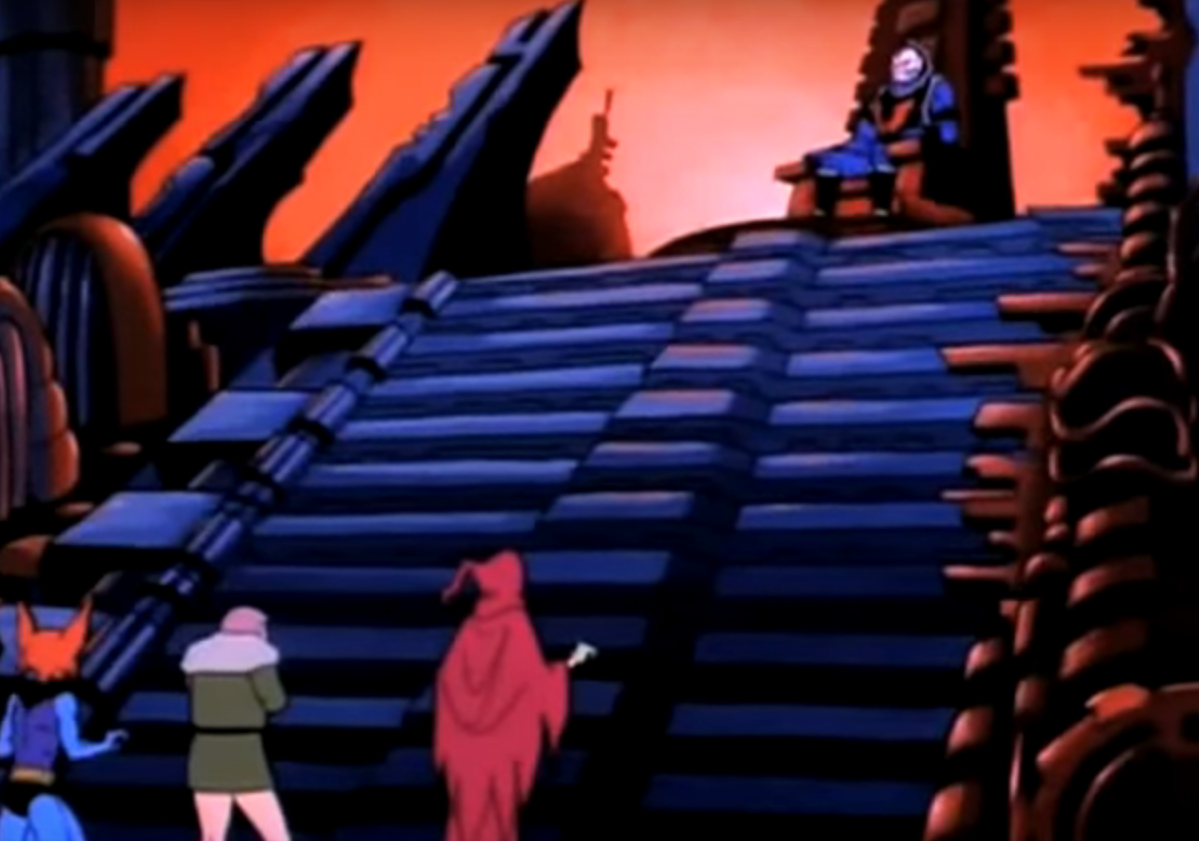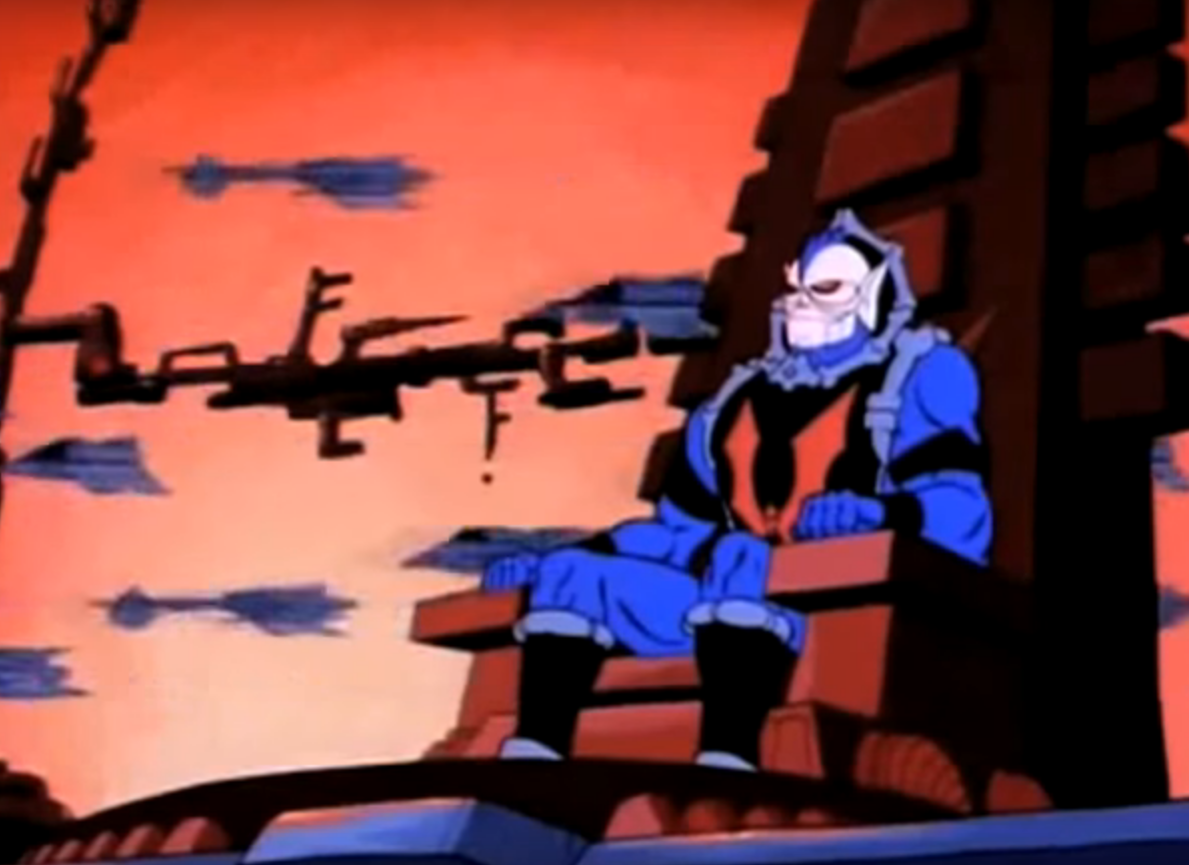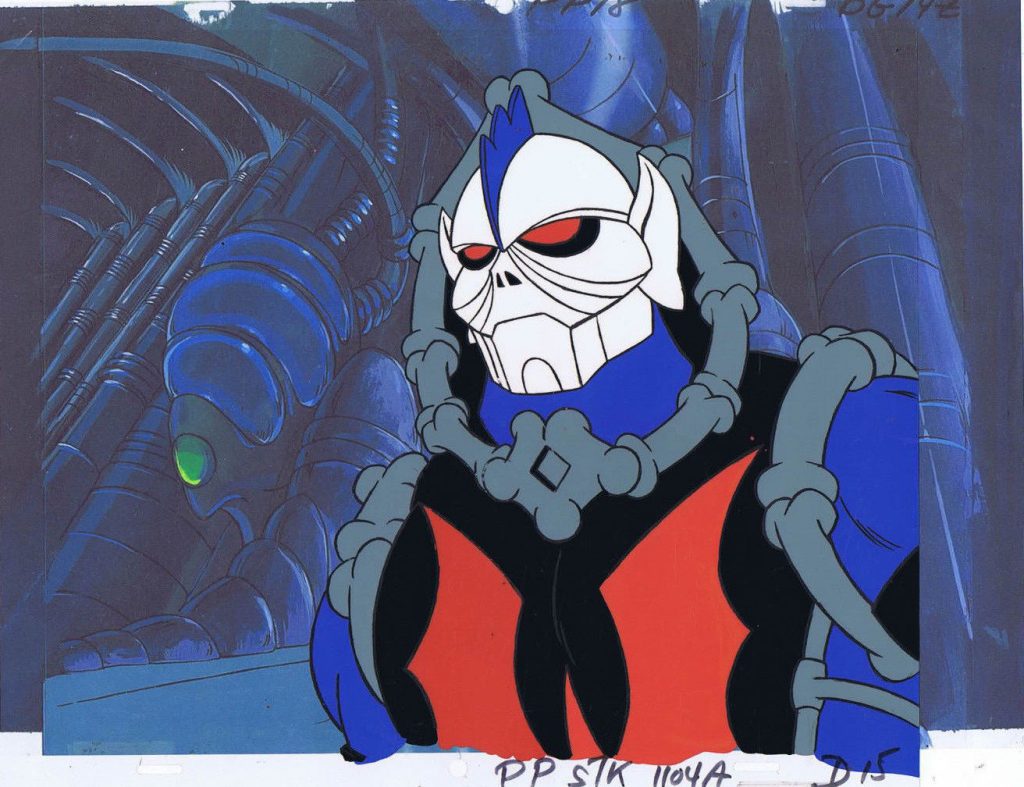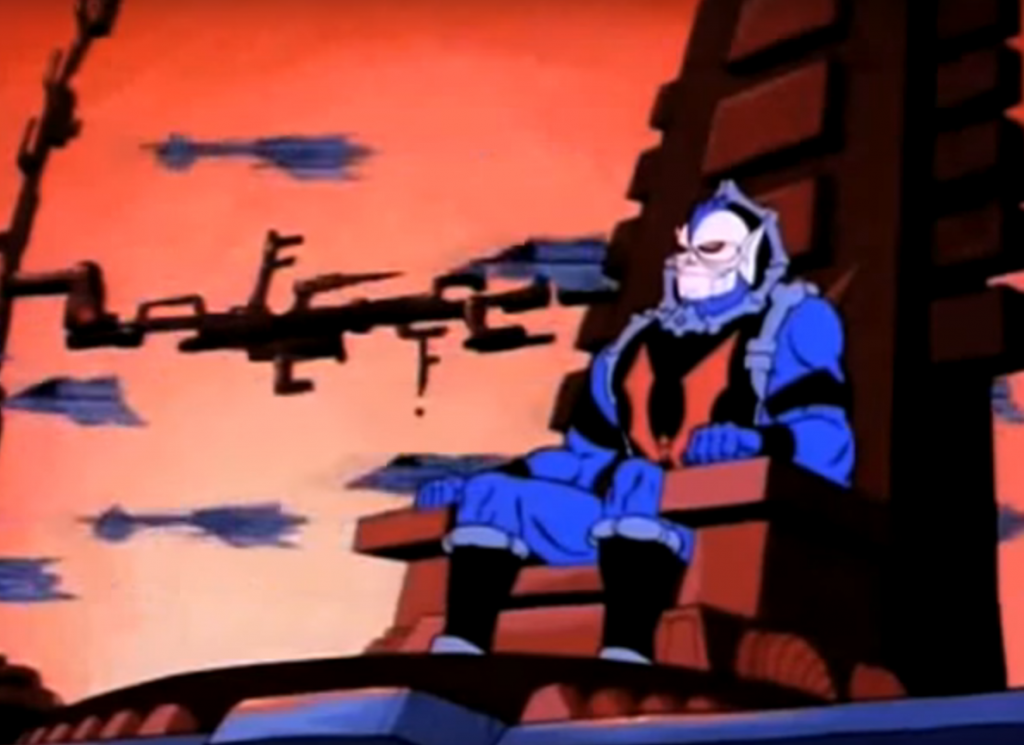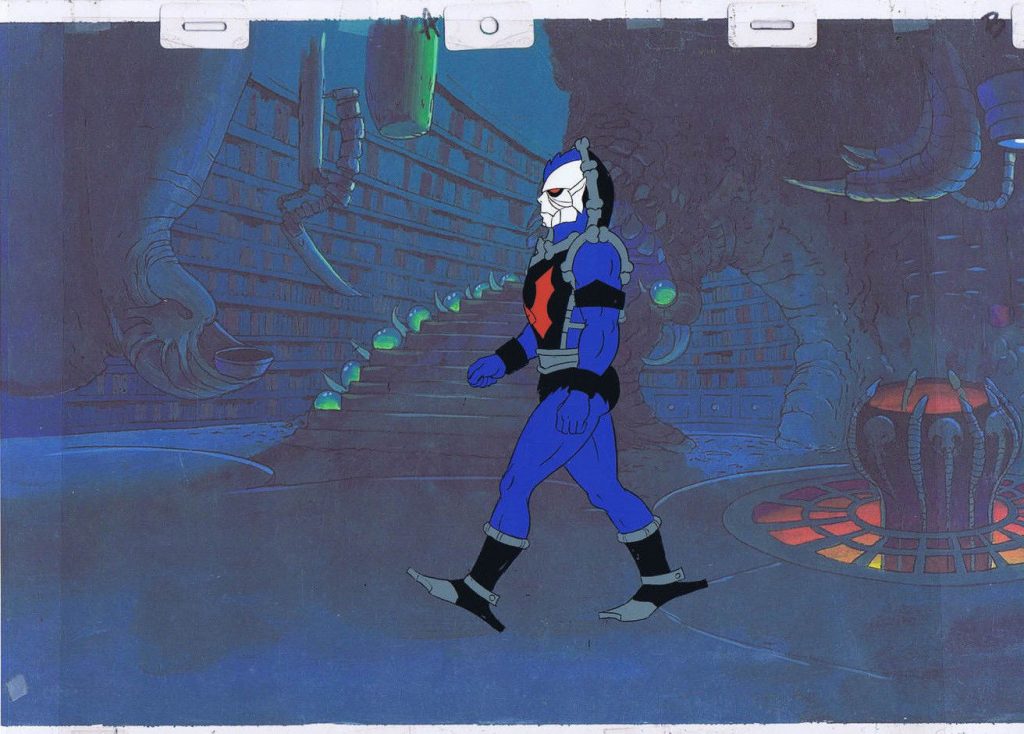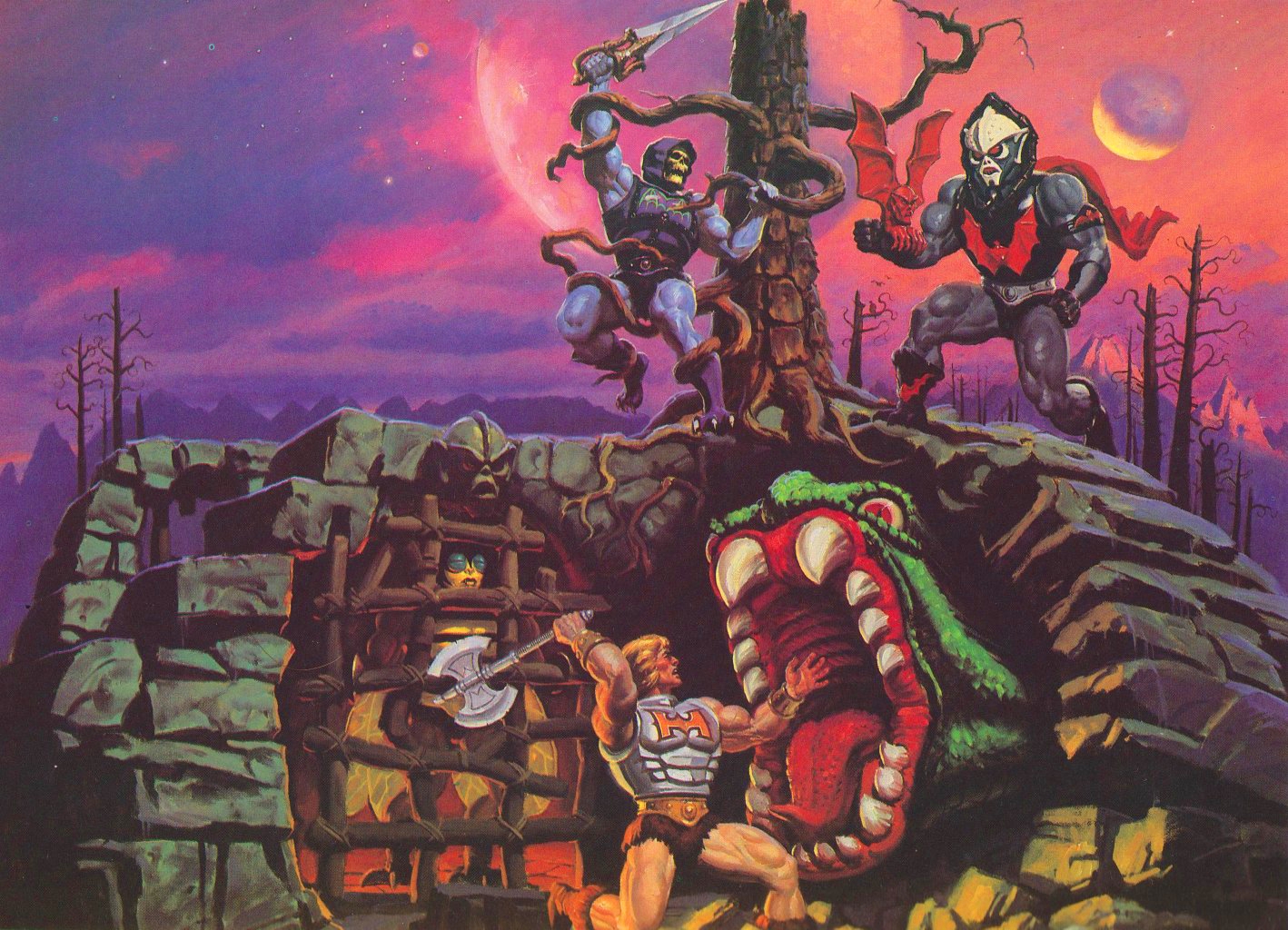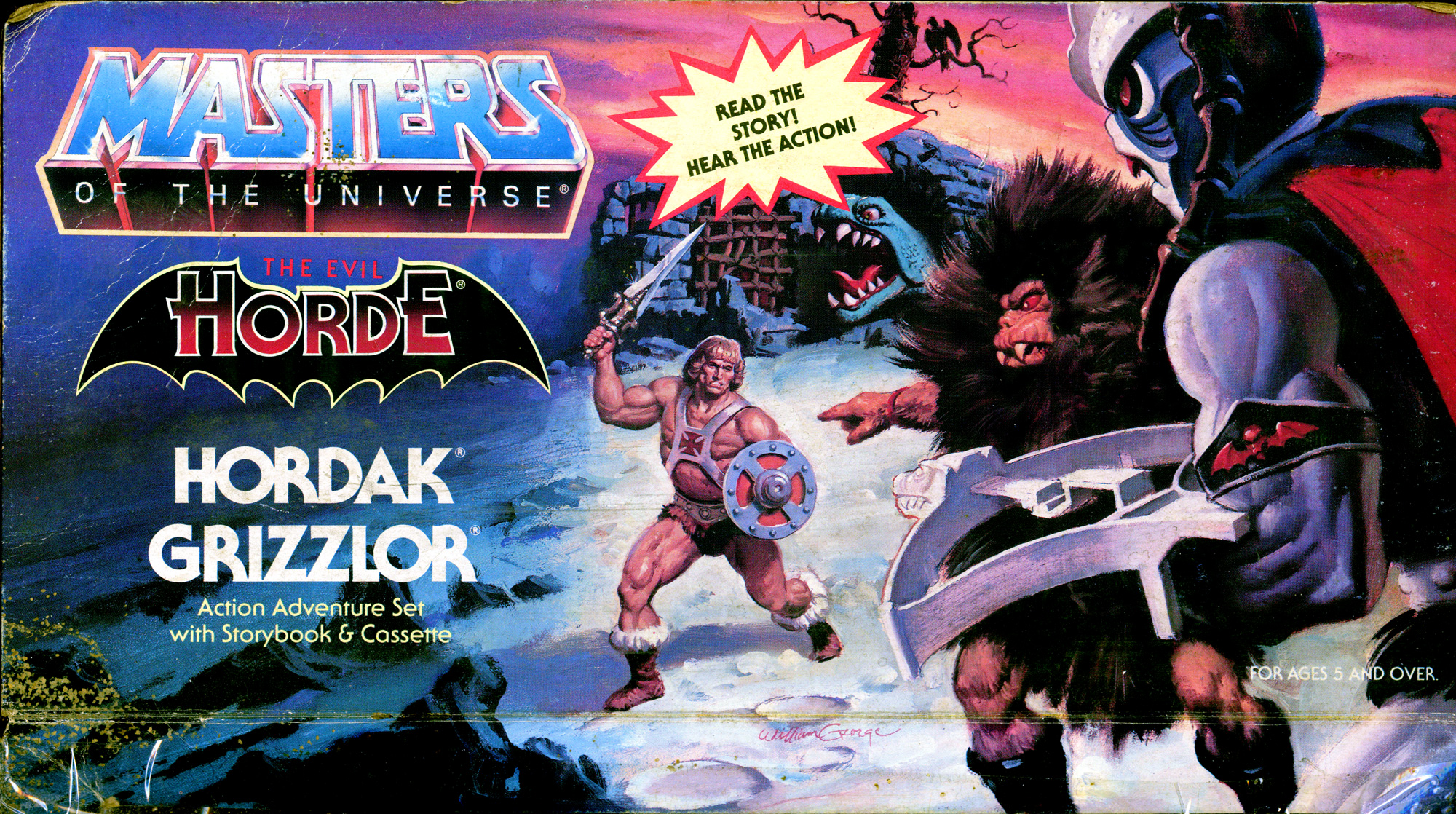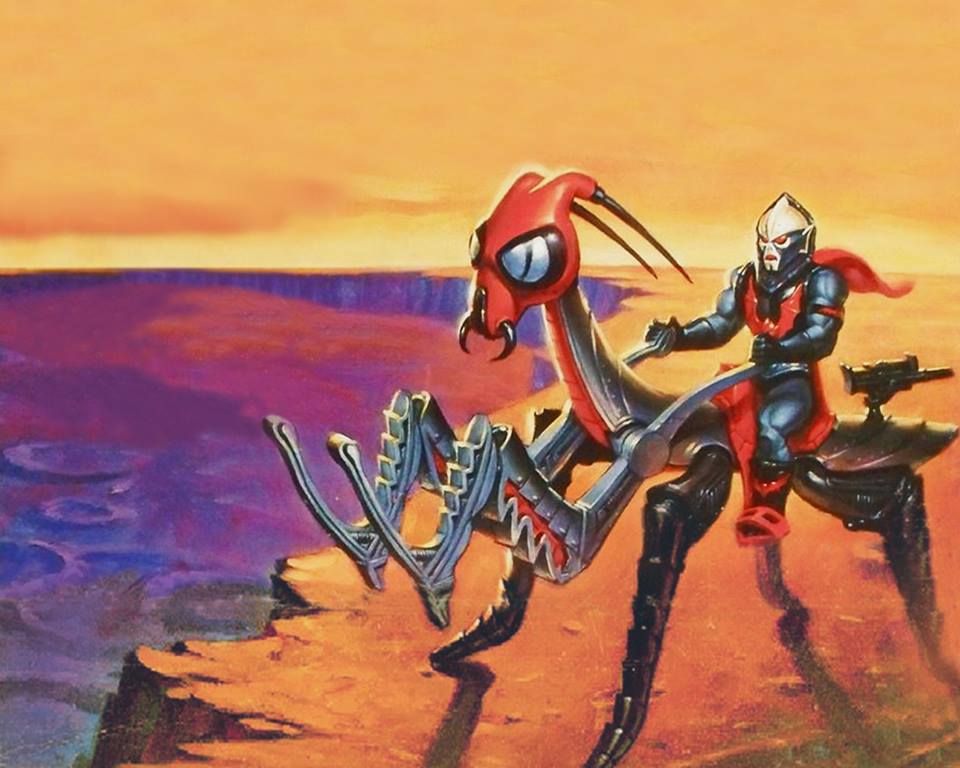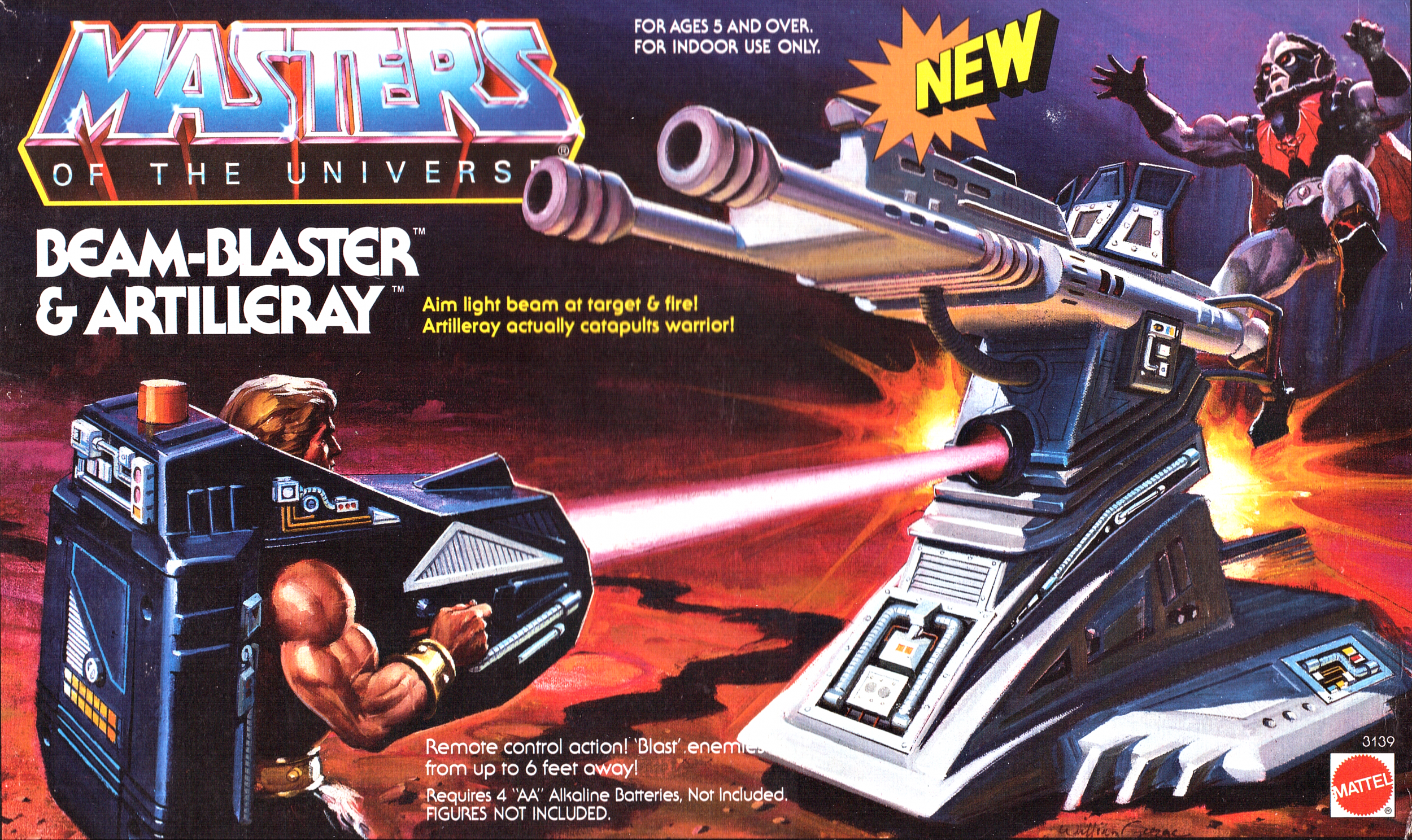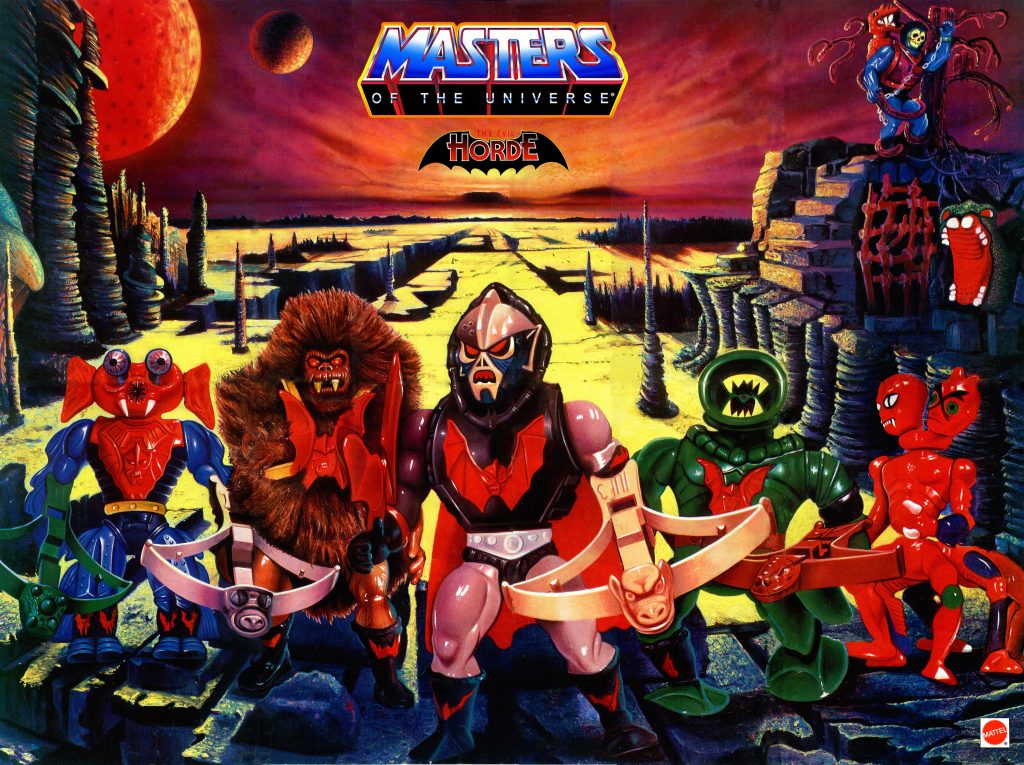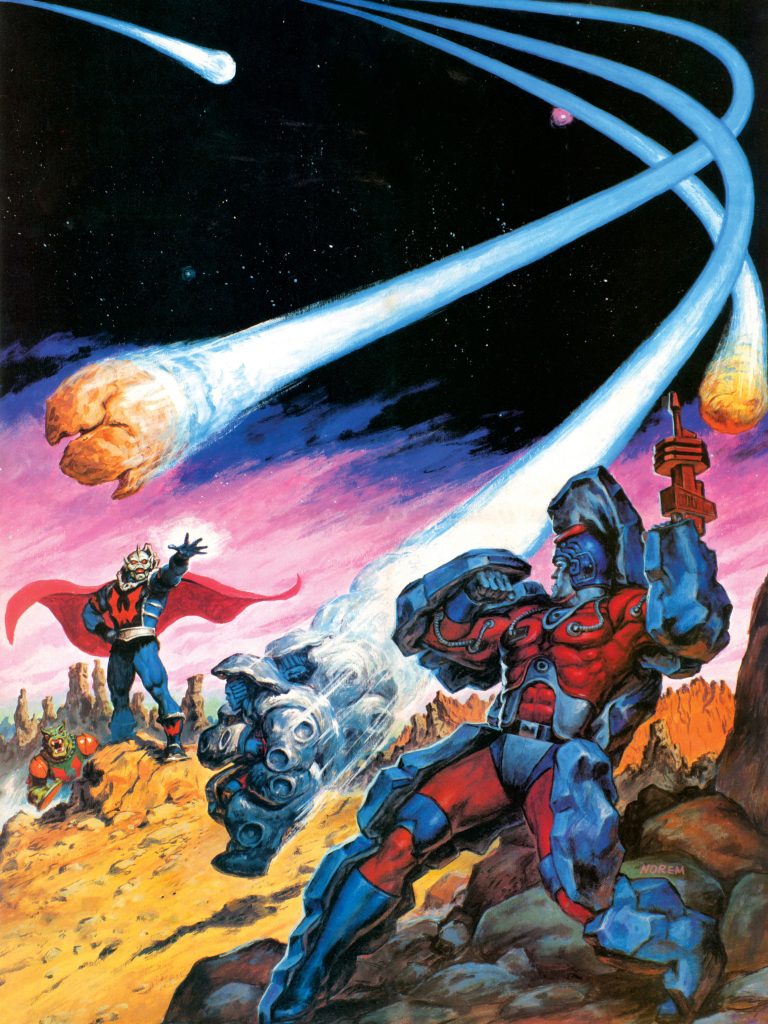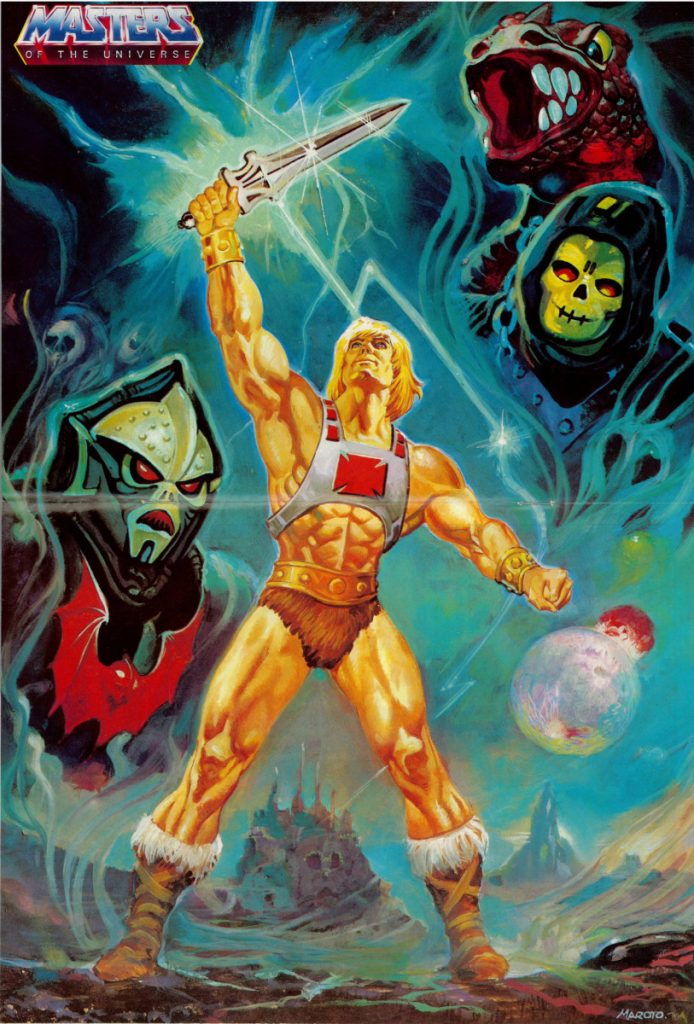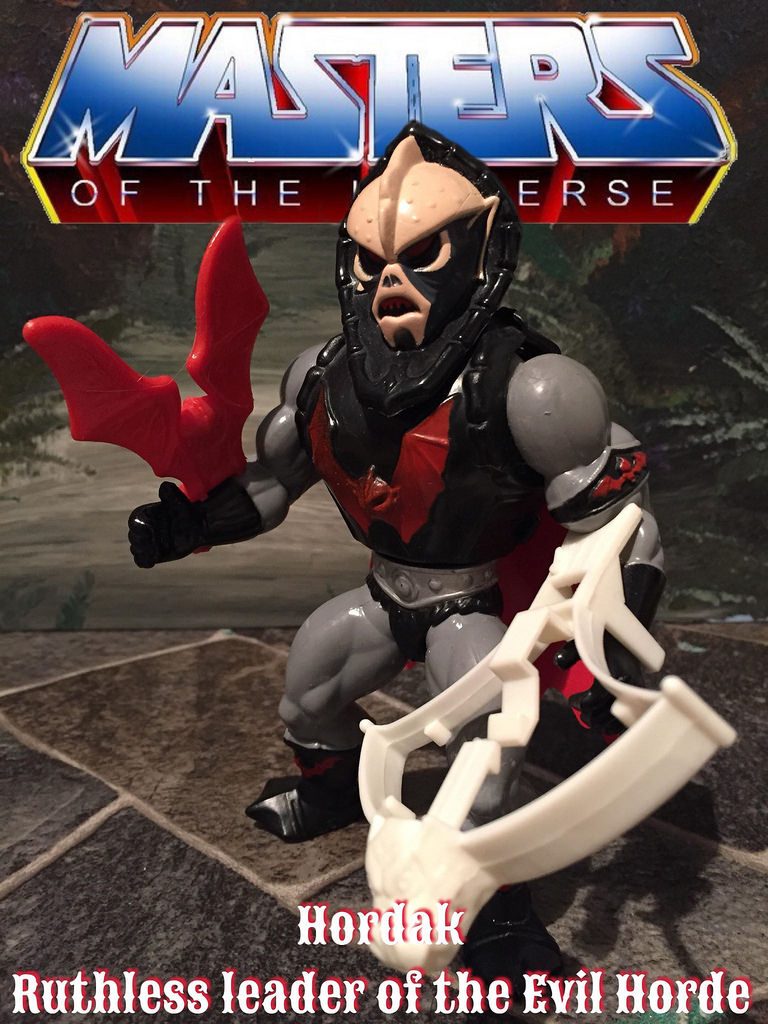
I got Mantenna at the same time I got Leech, for Christmas in 1985. While I gravitated toward Leech at first, I kept coming back to Mantenna. His telescoping eyeball action feature wasn’t all that much fun, but his bizarre appearance kept drawing me back in. What was this guy? He looked like a cross between an ant, an Elephant, and a space alien.

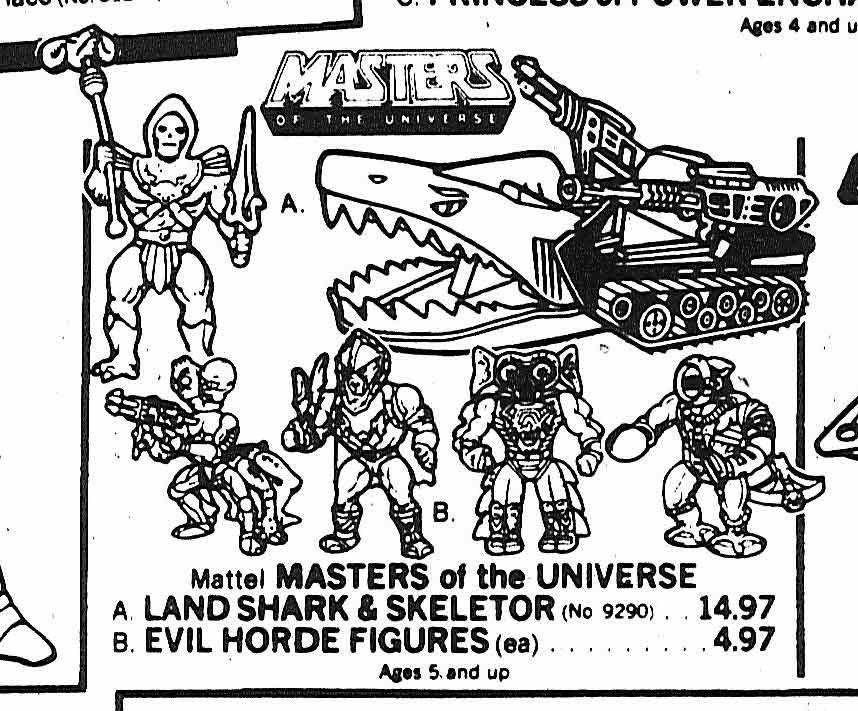
The design for Mantenna seems to originate with this Filmation illustration (below) by Curtis Cim, shared by James Eatock and The Power and the Honor Foundation. Many of the key aspects are already there, including the pop-out eyes and four legs.

Ted Mayer took the design and translated it into a something closer to the toy design, making it even more chitinous and alien-looking, Mantenna is certainly the weirdest looking figure in the Masters of the Universe toyline. According to the Power and the Honor Foundation Catalog, Mantenna’s early working names were Sensor (also a working name for Zodac) and Raydor. All of his names are puns on devices used to sense things from a distance – hence his large, pop-out eyes and oversized ears.
This early version of the character (below) has the early detachable horde insignia. He also has white teeth, red hands, and lacks the horde emblem shinguards he would get later in his design evolution.

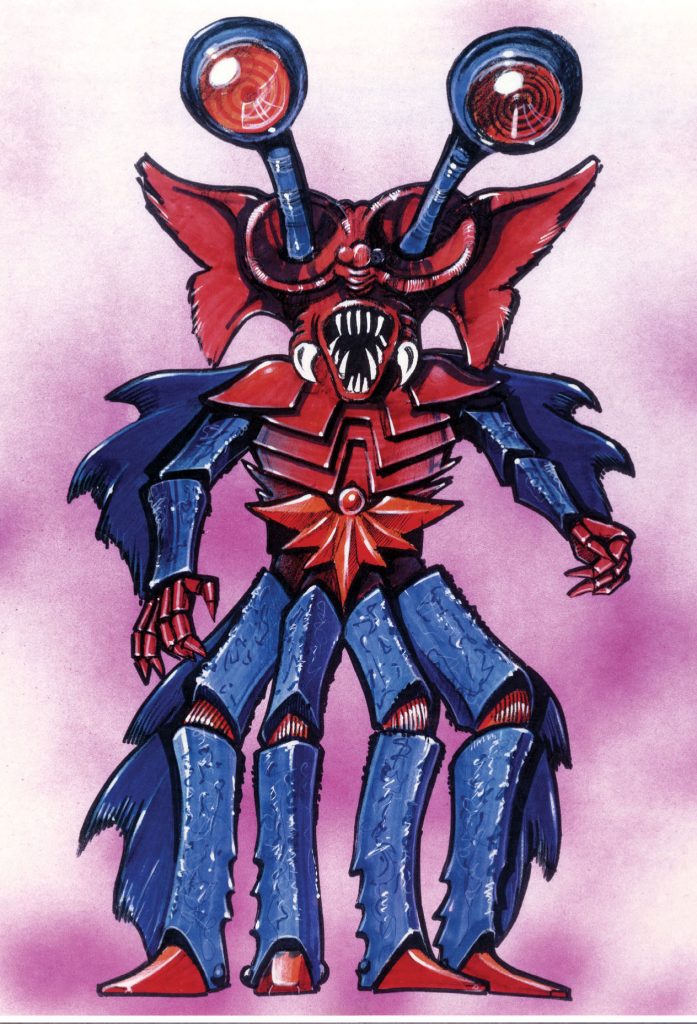
This revised drawing by Ted Mayer gives the character red teeth, and the standard Horde insignia on his check, shin guards, and left arm. He was given a yellow belt and black trunks. He also had a strange staff weapon with some kind of creature wrapped around it. Hordak had a similar weapon in early concept art as well.
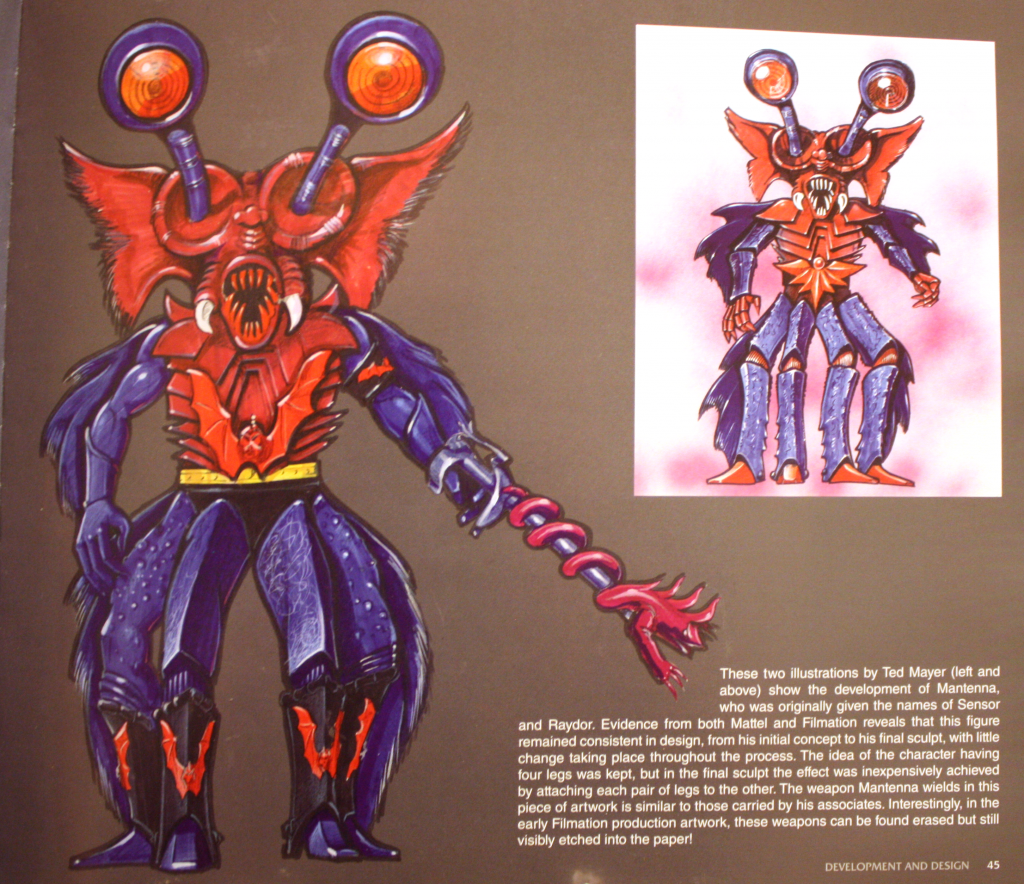
The prototype Mantenna is featured in the 1985 Mattel dealer catalog. The shape is finalized, but there are some color differences between this and the final toy. He has orange sides, rather than black. His chest insignia is outlined in black, as are his red teeth. His eyes seem to also have orange and red veins.
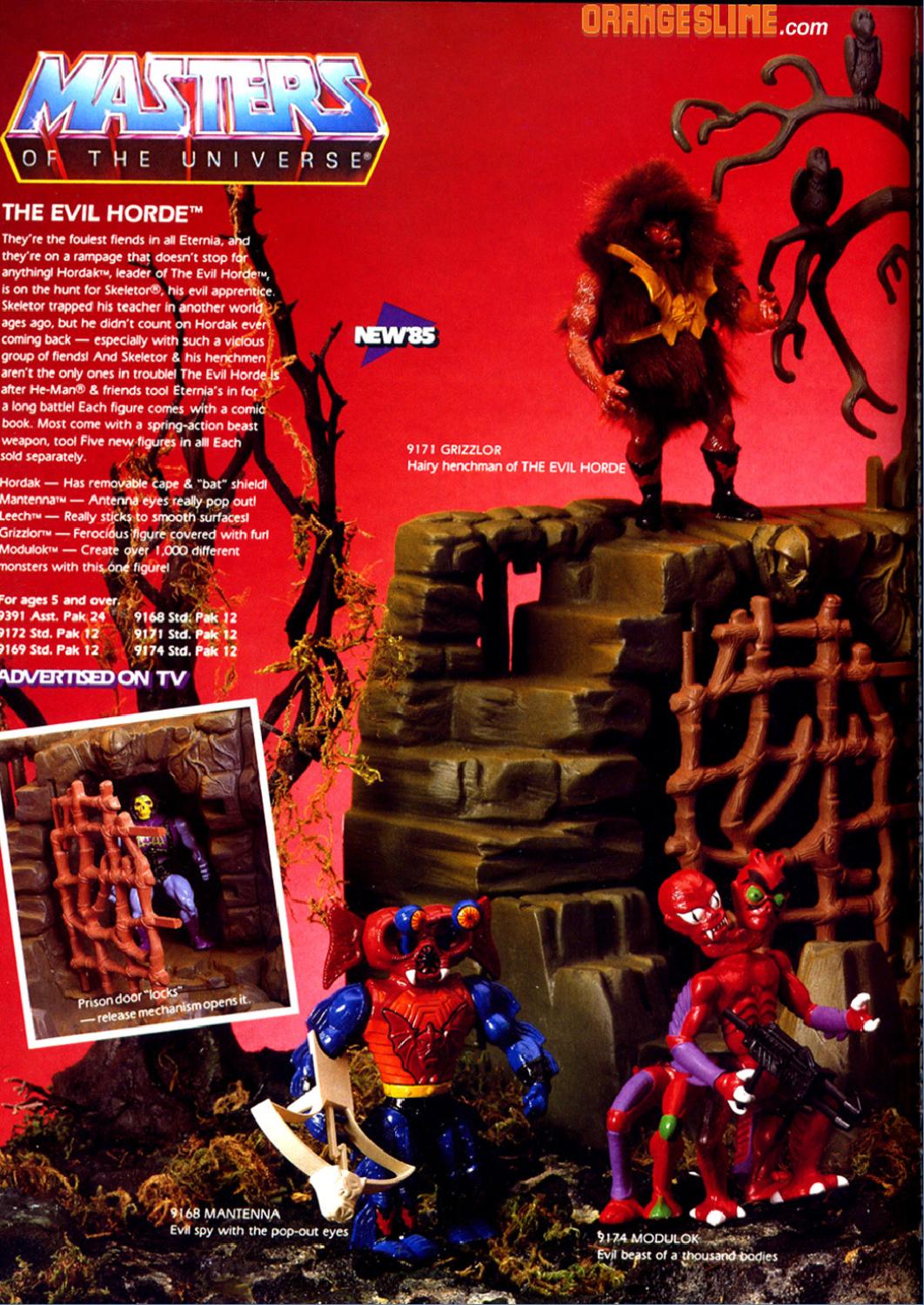
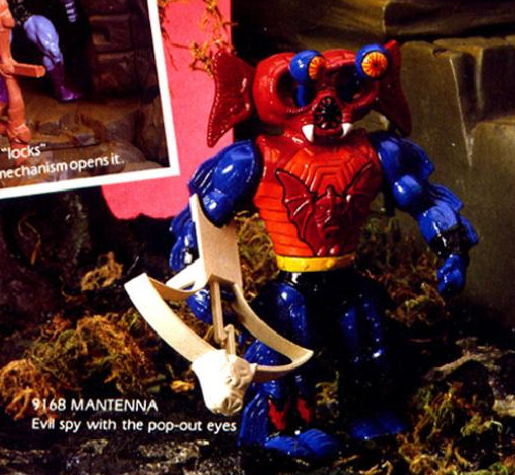
Mantenna’s cross sell artwork represents another intermediate step in his design – his sides are mostly black, there is still a strip of red or orange under his armpits. His teeth are also still outlined in black.

The final Mantenna has fully black sides and simplified teeth. At this point it’s really not obvious that they’re actually teeth. It really looks much grosser than that. It’s not obvious at first, but the toy does retain the original concept of having four legs – but the legs were fused together in pairs.

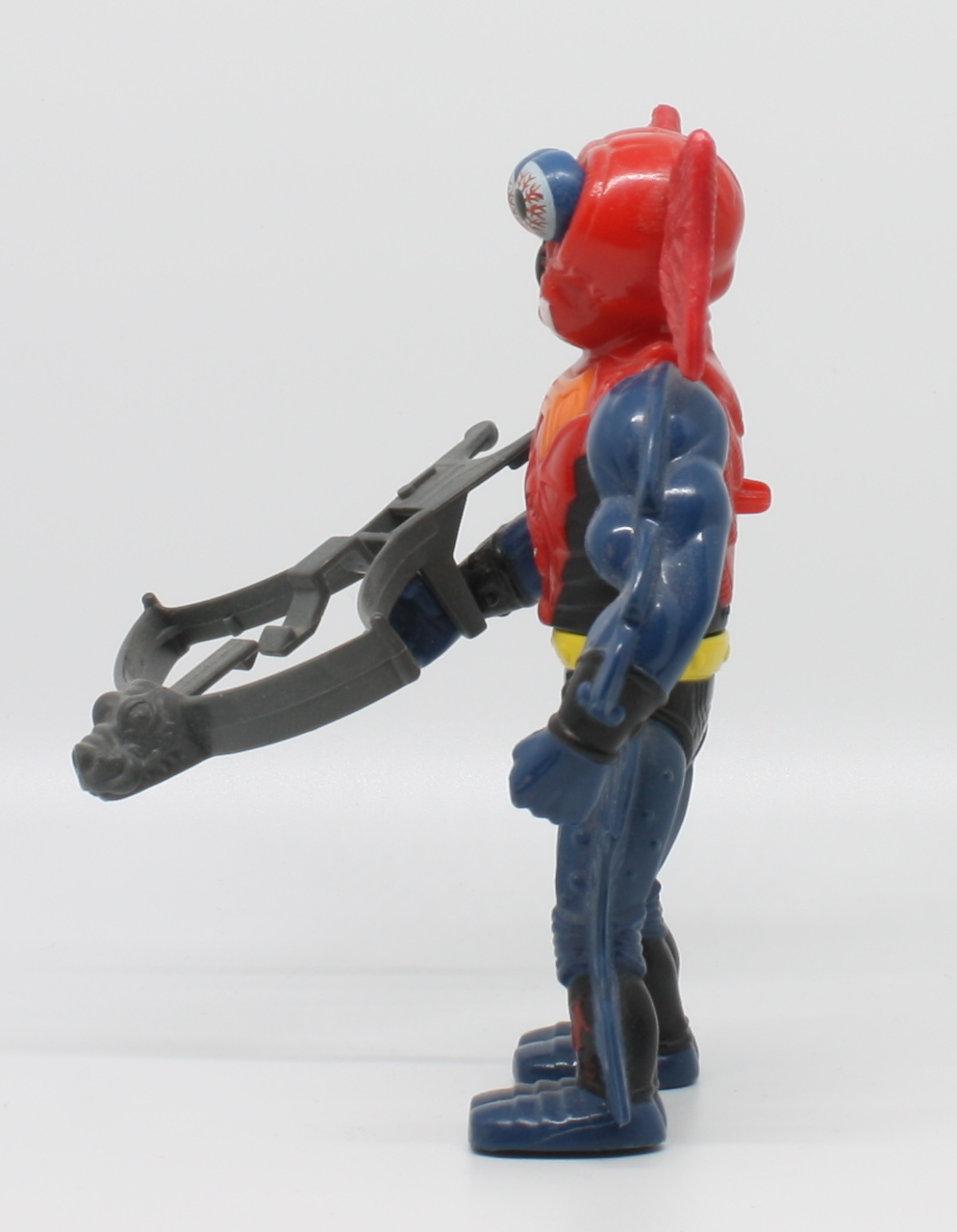
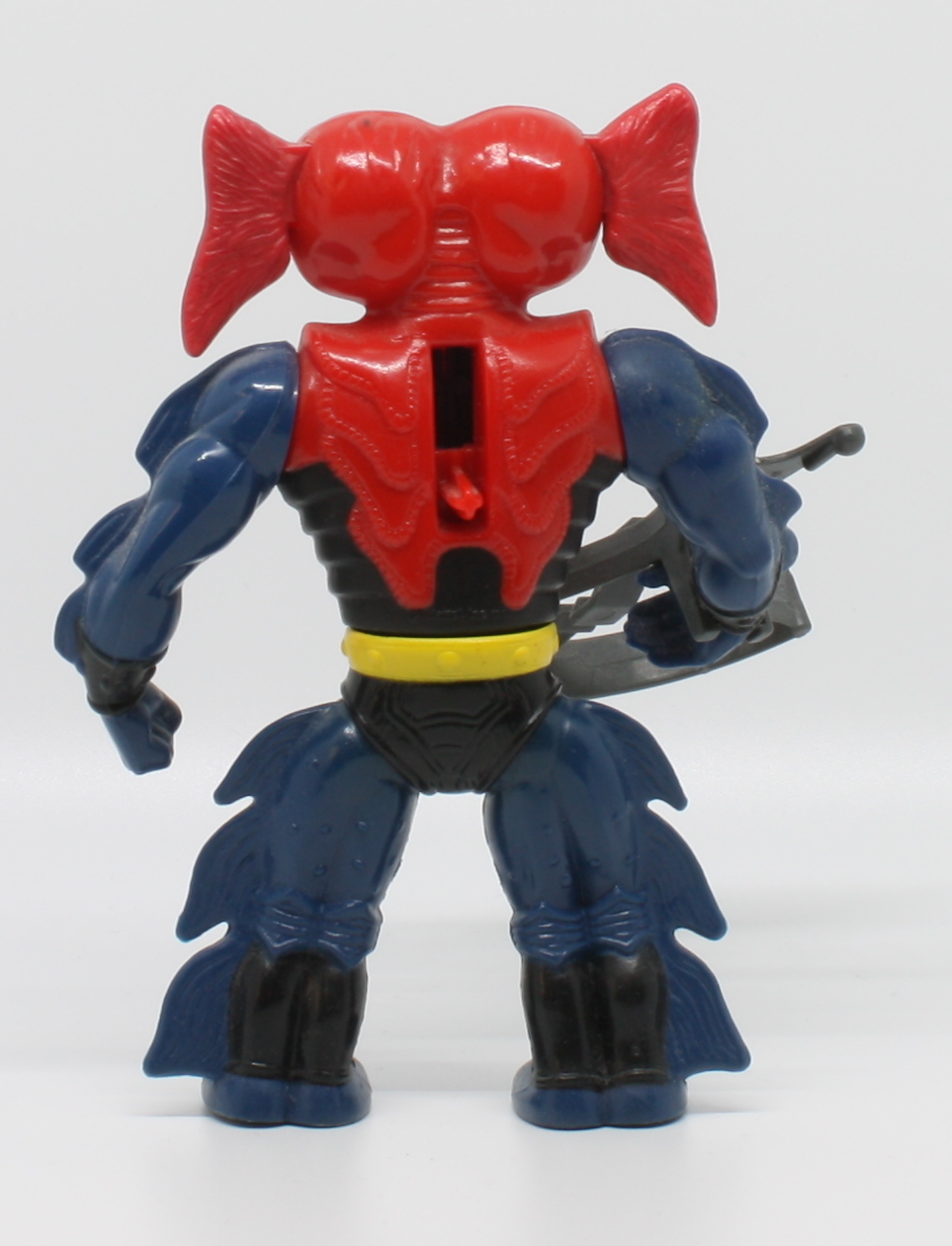

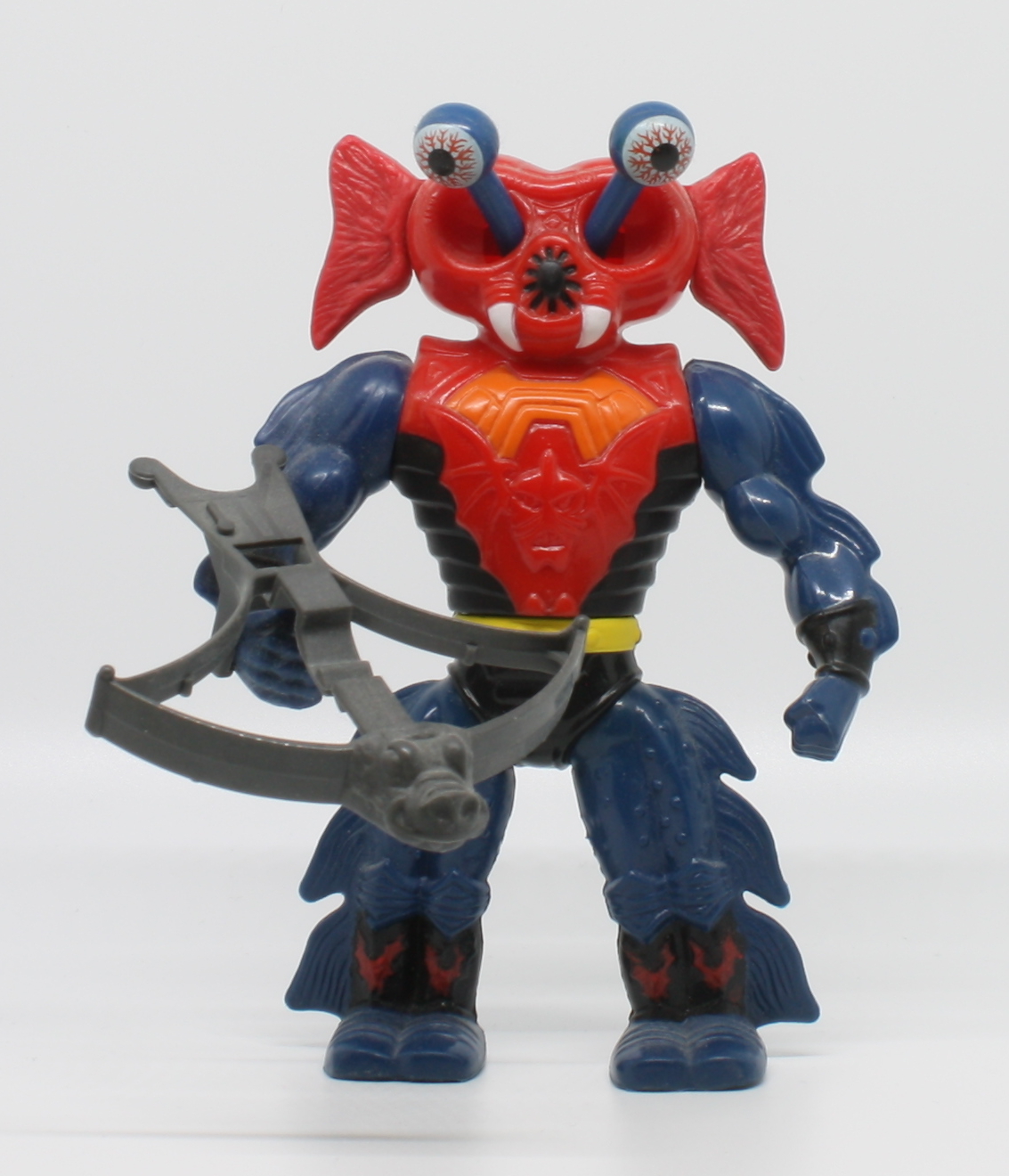
There is another Mantenna variant that has a color scheme on his chest closer to the cross sell art (with orange around the head of the bat design). It had a black lever in back, but the bats on his shin guards were not painted red:

Mantenna’s pop-up eye mechanism was also patented, although it seems like a simple enough design. The patent was filed December 17, 1984, and it was trademarked on September 10, 1984.
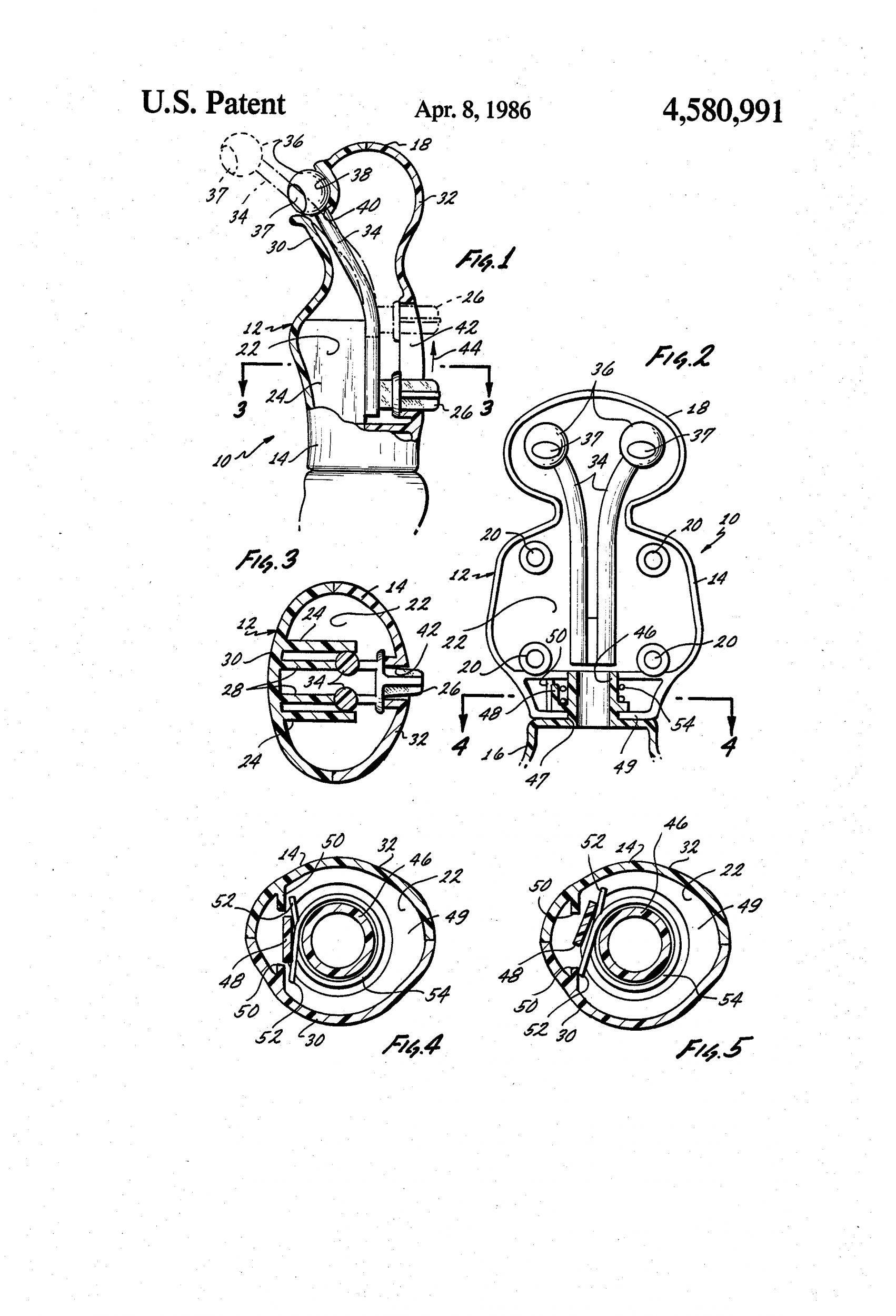
Mantenna was sold on his own single card, as well as in a JCPenny giftset with Leech.


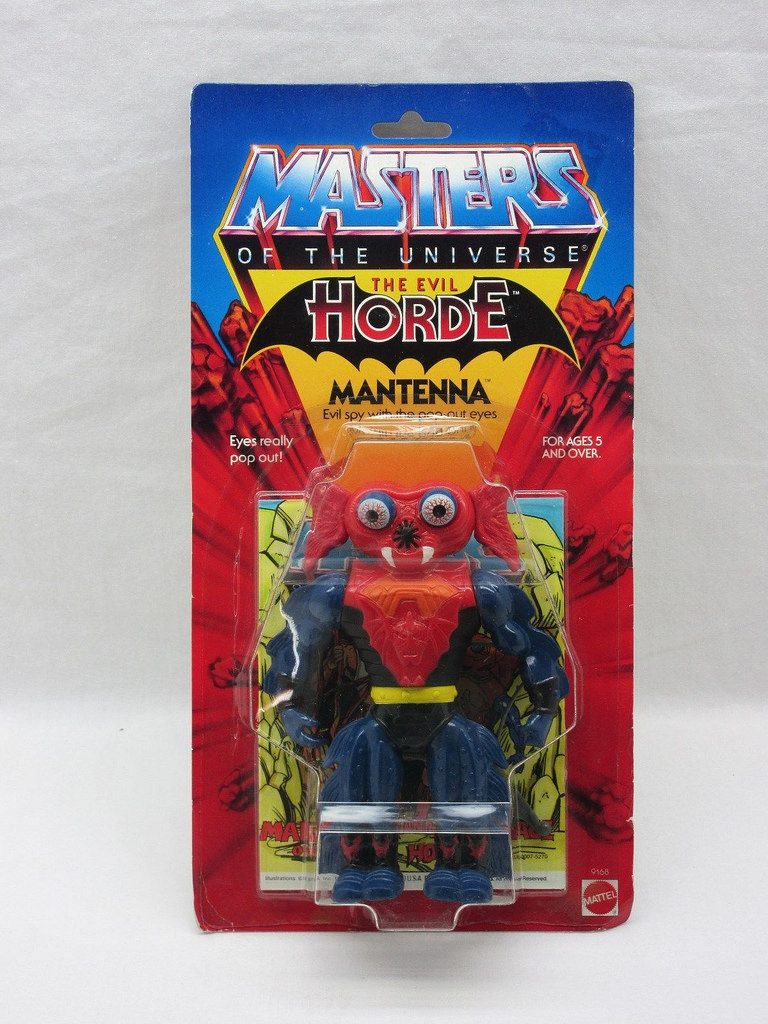
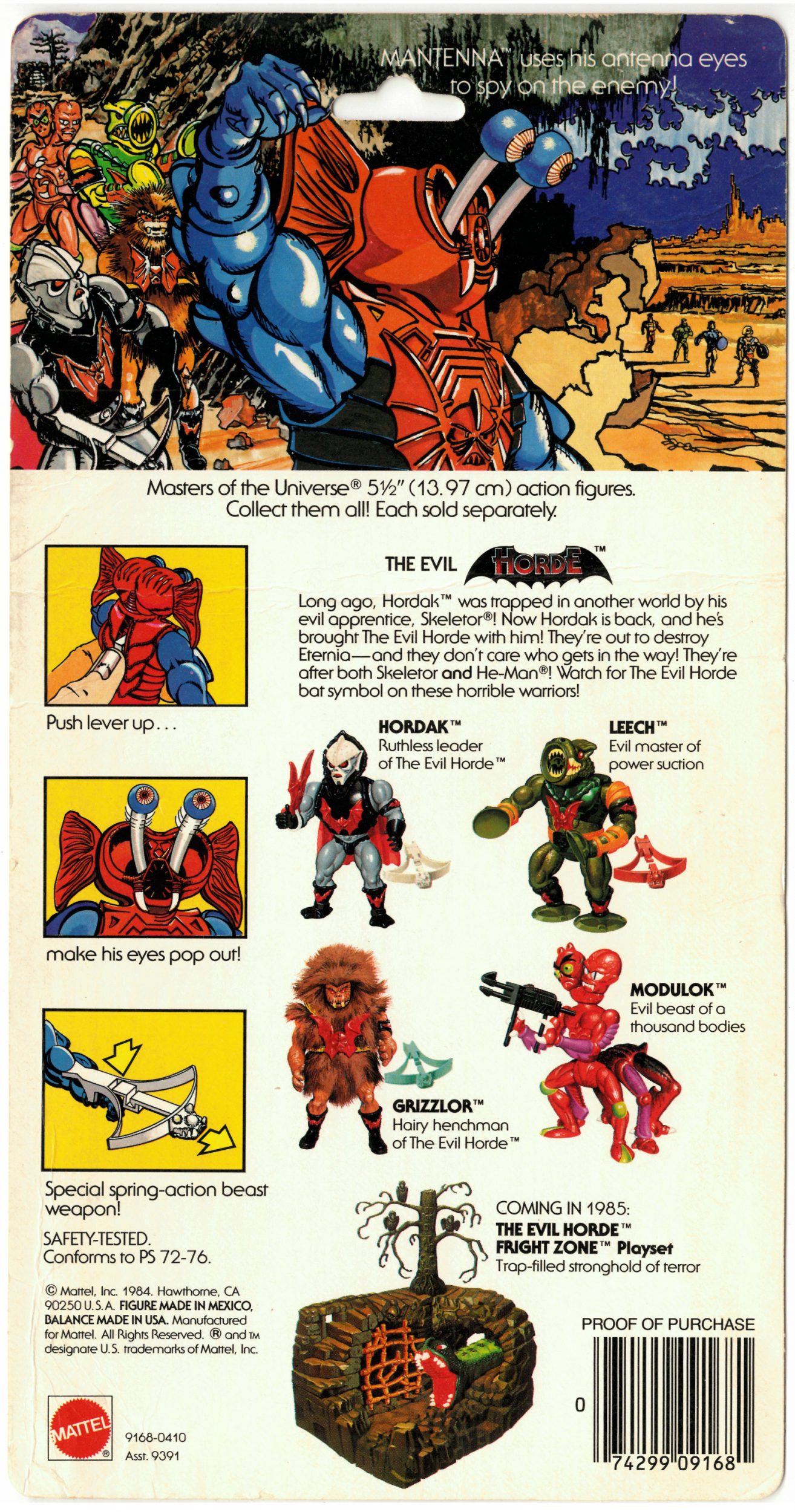
Mantenna’s minicomic isn’t a fan favorite. I remember not being able to get through it as a kid – the artwork seemed too jumbled and hastily done. It should also be noted that although Mantenna’s name is in the title, he barely makes an appearance in it.
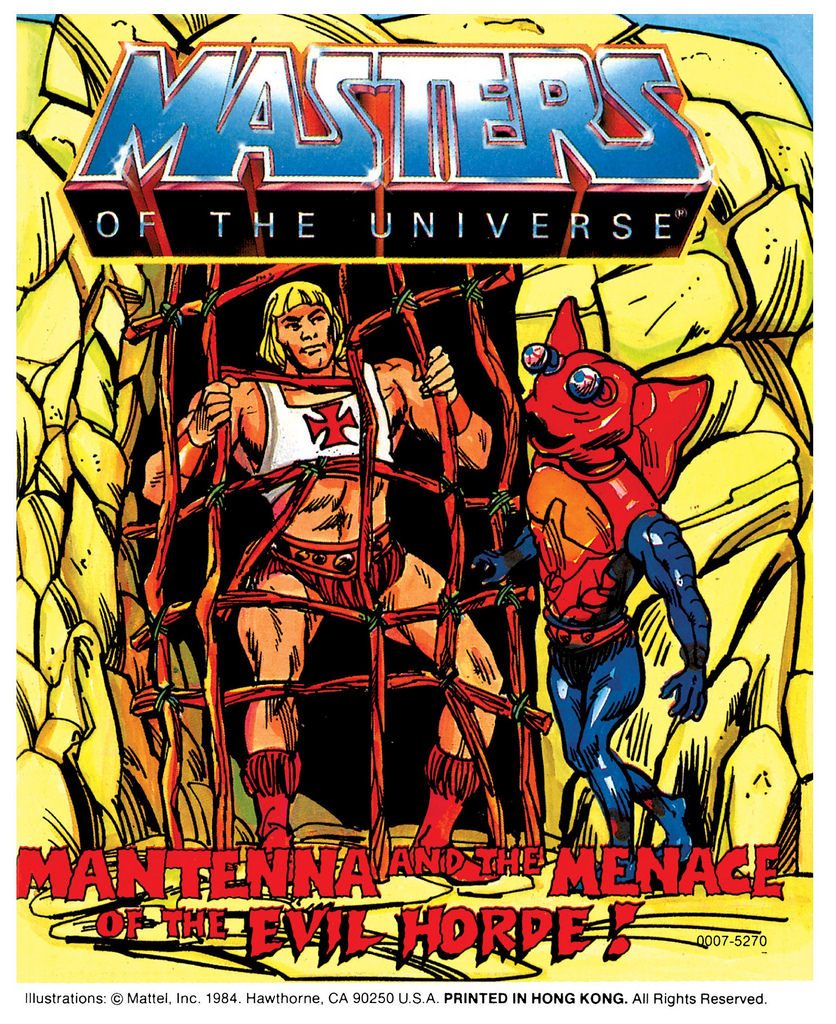
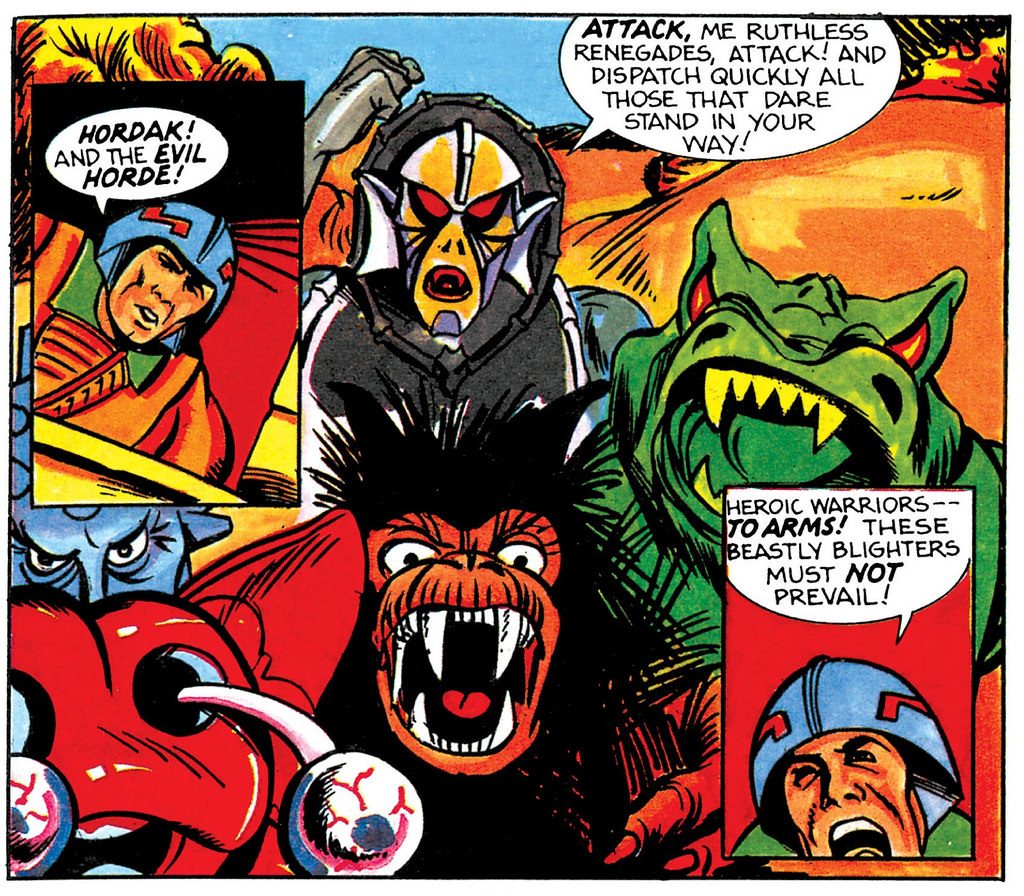
In The Power of the Evil Horde, illustrated by Bruce Timm, Mantenna has the ability to fire stun rays out of his eyes:


In the She-Ra/Princess of Power Bible, Mantenna is described this way:

In the Mattel Style Guide (illustrated by Errol McCarthy), Mantenna is characterized this way:
Power: frightening ability to see and hear over great distances with his highly sensitive ears and periscope scanners.
Character Profile: Mantenna can do more than just see with those wild eyes. He can fire a variety of horrible beams from them as well, including paralysis beams, stun beams, etc. Mantenna is also an agile scout and often goes out well ahead of his companions to make sure their way is clear for marauding, pillaging and the like. Since he is no slouch in the combat area, either, Mantenna rarely needs assistance on his scouting missions.

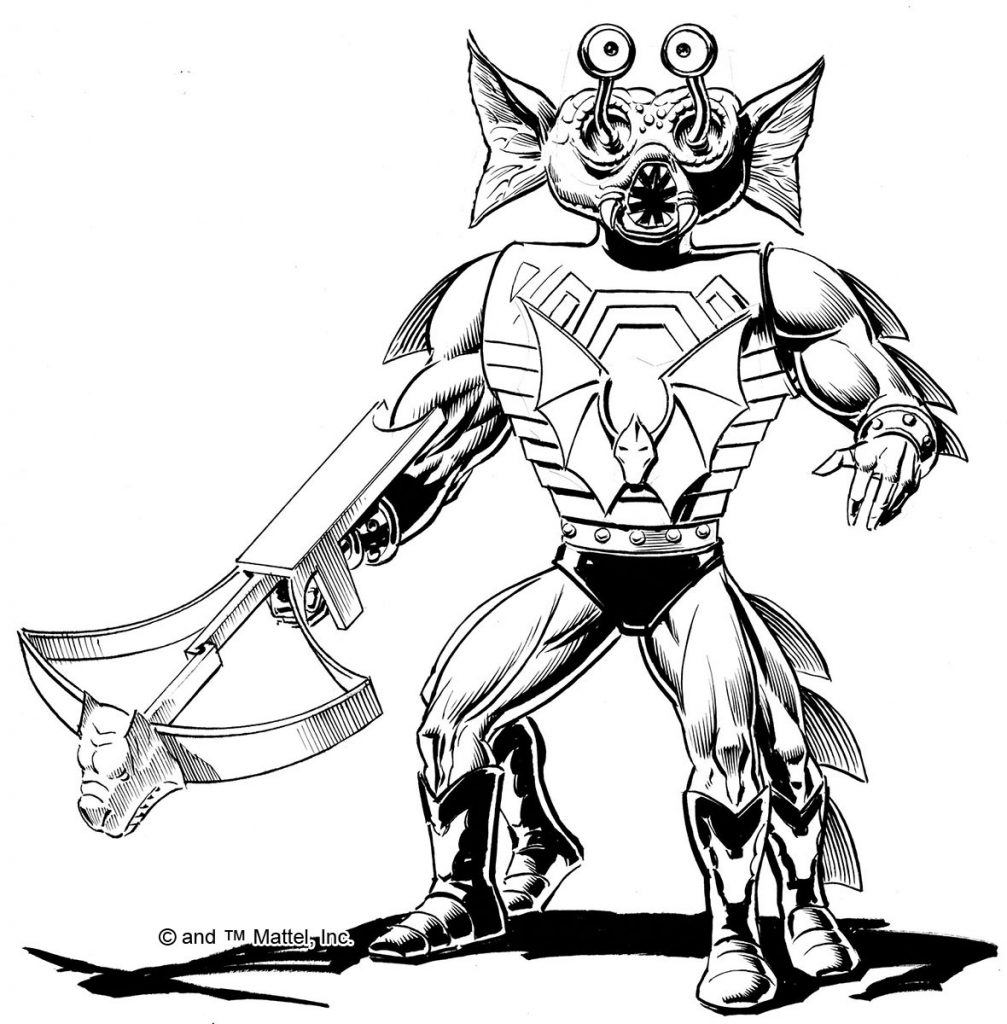
The 1985 Golden story, The Horde, seems to draw directly from Ted Mayer’s concept art in its depiction of both Mantenna and Leech:

Mantenna’s grotesque appearance was toned down for the She-Ra cartoon series. He lost most of the fins on his limbs, and his mouth lost its sphincter-like look. He was also given simple yellow eyes rather than the bloodshot eyes of his action figure. Changes were made to his hands, feet, and costume as well. He was generally depicted a bumbling henchman, often dropped through a trap door by Hordak.
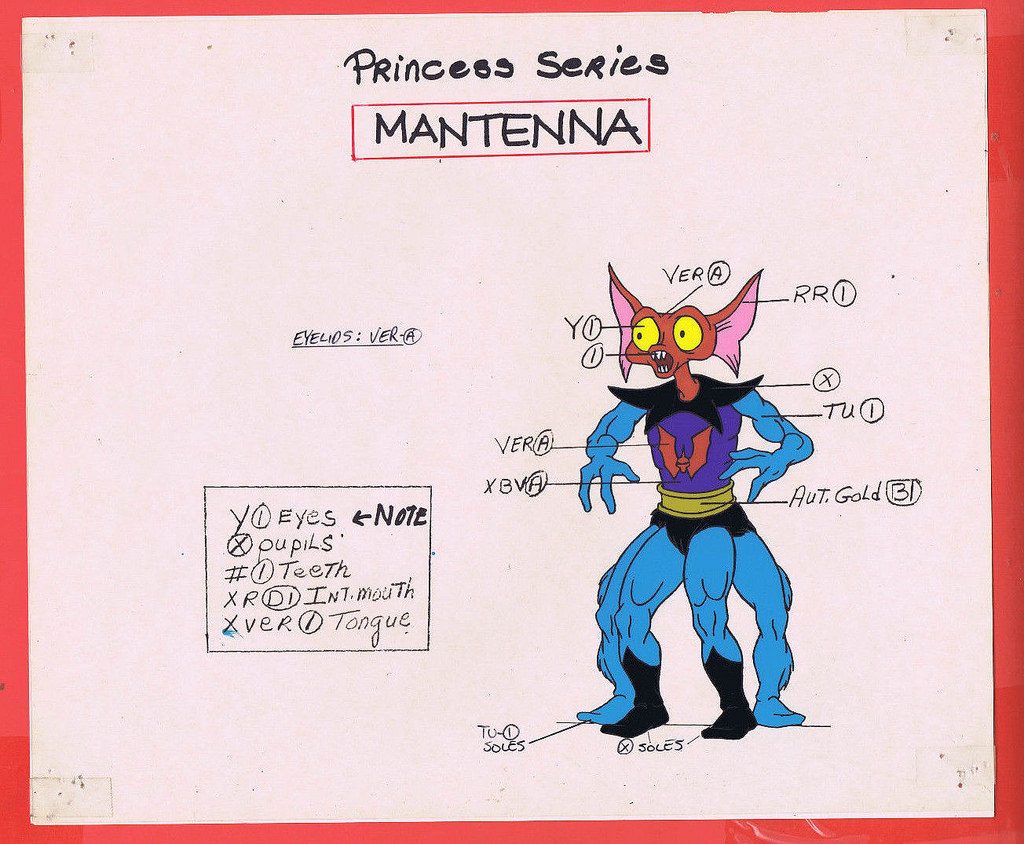
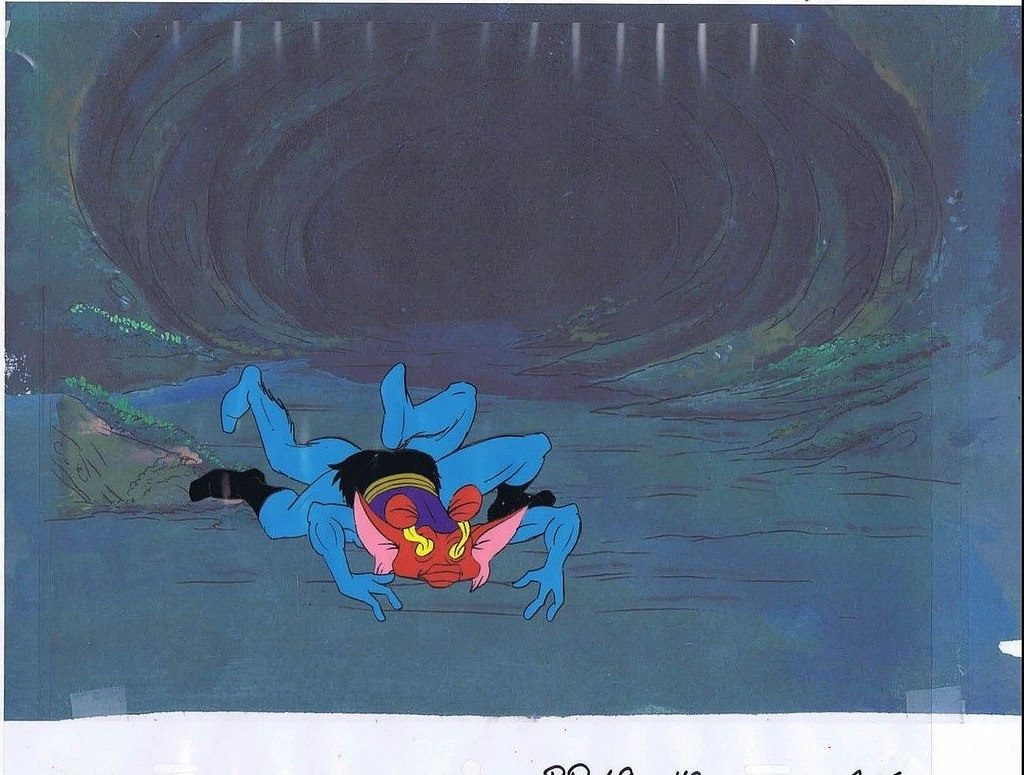

The Filmation Mantenna did have the ability to shoot various beams from his eyes, which he occasionally used to devastating effect:

Mantenna maintains his Filmation look in this Evil Horde poster by Earl Norem. It appeared in the Summer 1985 issue of Masters of the Universe Magazine (US version).

Want to support the blog? Consider becoming a Patreon supporter. You’ll also gain access to exclusive content and early access to posts on the blog. Thank you!


